Live: Jazz take on Magic in Orlando
Sundance Film Festival wanted a more diverse press corps to review its movies. Now its solution has growing pains.
Attending his first Sundance Film Festival in 2019, film critic Rendy Jones said, was “overwhelming at first,” but “it was amazing.”
“I met so many different people from different fields — industry and filmmakers,” Jones said, adding that he saw movies in Park City that “have been the highlights of the year.”
Jones, who runs the movie website Rendy Reviews, couldn’t have made the trip from Brooklyn to Utah without the Sundance Institute’s inaugural Press Inclusion Initiative. The program gives travel stipends to critics, freelancers and journalists from underrepresented communities — women, people of color, members of the LGBTQ+ community and people with disabilities. Jones, 21, qualified on two counts: He’s black and nonbinary.
This year, the initiative is dealing with the growing pains of its success. In late December, 51 journalists learned they had received stipends, but a bigger number of applicants — 317 — meant more people missed the cut.
The initiative aims to balance the diversity of the movie press, which is overwhelmingly white and male. According to a 2018 study by the University of Southern California Annenberg Inclusion Initiative, white males made up 65.6% of the critics reviewing the top 300 films from 2015 to 2017.
Of the 317 applicants for Sundance’s stipends, according to the institute, 70% were women, 69% were people of color, and 26% were both. Also, 31% were LGBTQ+, and 14% were people with a disability.
Among the 51 who were approved for stipends, 61% are women, 84% are people of color, and 51% are both. Also, 49% are LGBTQ+, and 25% have a disability. (Sundance did not disclose how much writers received with their stipends.)
Jones didn’t even get to apply. Without the invitation email Sundance sent out for 2019 applicants, Jones only heard about this year’s process “through a friend” in the middle of a busy Thanksgiving season. He missed the deadline by one day.
“I panicked for a bit,” Jones said. Then he got busy. He set up a GoFundMe account to raise travel money from his fans. Within five days, Jones received donations of $2,050, hitting his goal of $2,000.
“The money went to the flight [to Salt Lake City], and the Ubers up and down the mountain, which is really expensive,” Jones said, adding a friend is putting him up in Salt Lake City for the festival’s duration.
Sharronda Williams, the Atlanta-based creator of the movie site Pay or Wait, already had booked a non-refundable hotel room when she got word that she was rejected for the stipend. Williams, who declined to comment to The Salt Lake Tribune, also went the GoFundMe route, with a goal of $3,775 to cover her flight and the room (which she’s sharing with two other freelancers). As of Tuesday, Williams had raised $4,884, well above her goal.
Karim Ahmad, Sundance’s director of outreach and inclusion, and Spencer Alcorn, director of media relations, posted on Sundance’s blog Friday that the institute is looking at ways to improve the program for 2021. One idea is to move the application process earlier in the year, so those who are rejected have more time to find alternative funding before the festival.
A non-diverse press corps, Ahmad and Alcorn wrote, “can have a chilling effect on rich discourse and collective dialogue, and it can ultimately underserve the artists we showcase at the Sundance Film Festival, by limiting the critical voices that discuss their work.” Such limits, they said, “can directly affect how audiences meet that work.”
Sundance’s efforts to diversity the press corps is starting to work. At the 2019 festival, 63% of the press corps were not straight, cisgender, able-bodied white men, the institute said.
The applicants were vetted for strength of submission, past work and coverage plans for the 2020 festival. The three-person panel that reviewed the applications was comprised of Chaz Ebert, CEO and publisher of RogerEbert.com and widow of famed critic Roger Ebert; Kate Hagen, director of community for The Black List, a nonprofit that supports screenwriters; and Nic Novicki, founder of the Easterseals Disability Film Challenge, an annual contest that fosters stories about people with disabilities.
The initiative is backed by the grant-making group Critical Minded, the streaming service Netflix, the philanthropic Open Society Foundations and the review website Rotten Tomatoes.
The 2020 Sundance Film Festival runs Jan. 23 to Feb. 2 in Park City, and at venues in Salt Lake City and the Sundance resort.
Utah takes its best shot at No. 4 Oregon, but Ducks hang on for a 69-64 victory






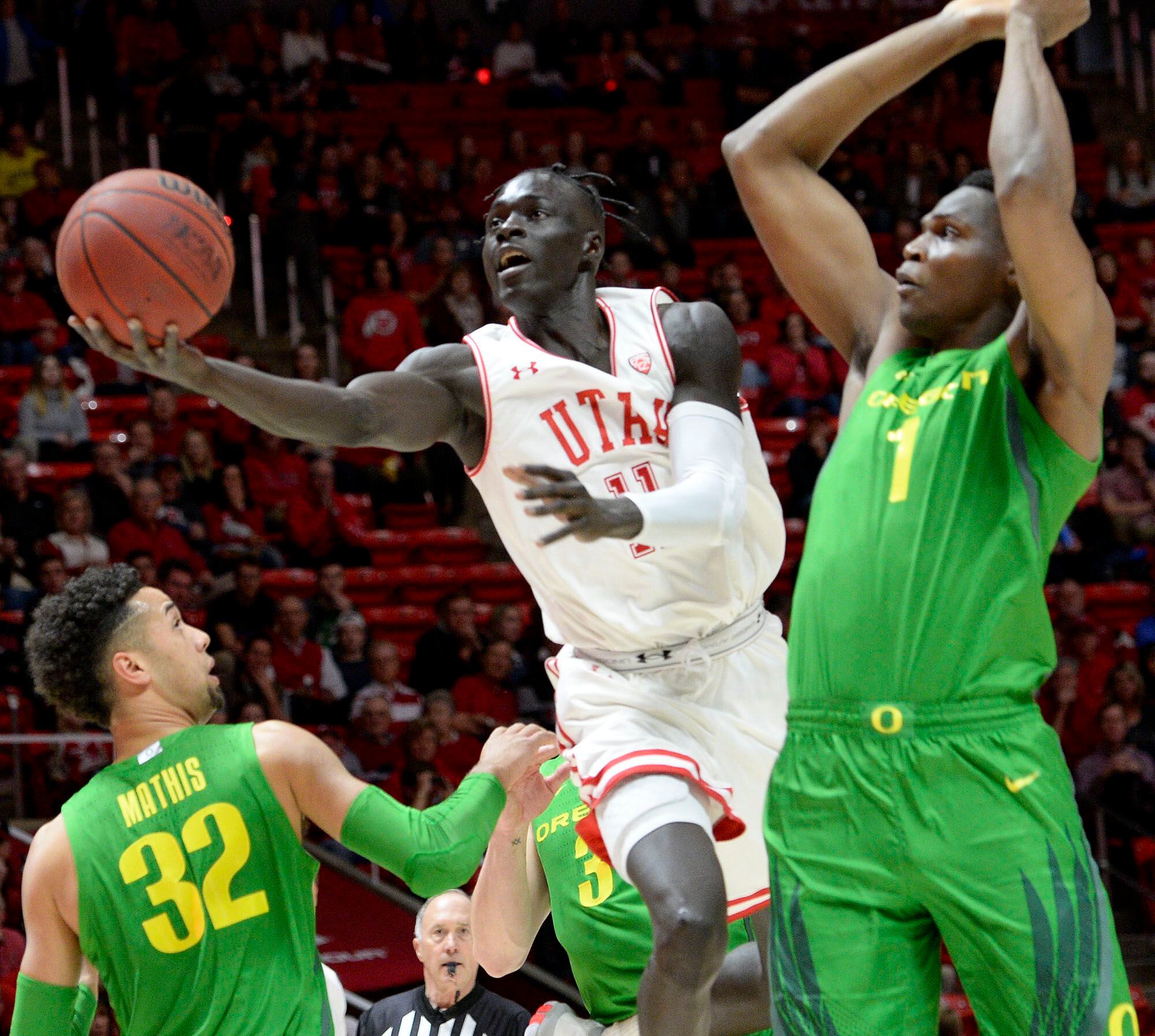
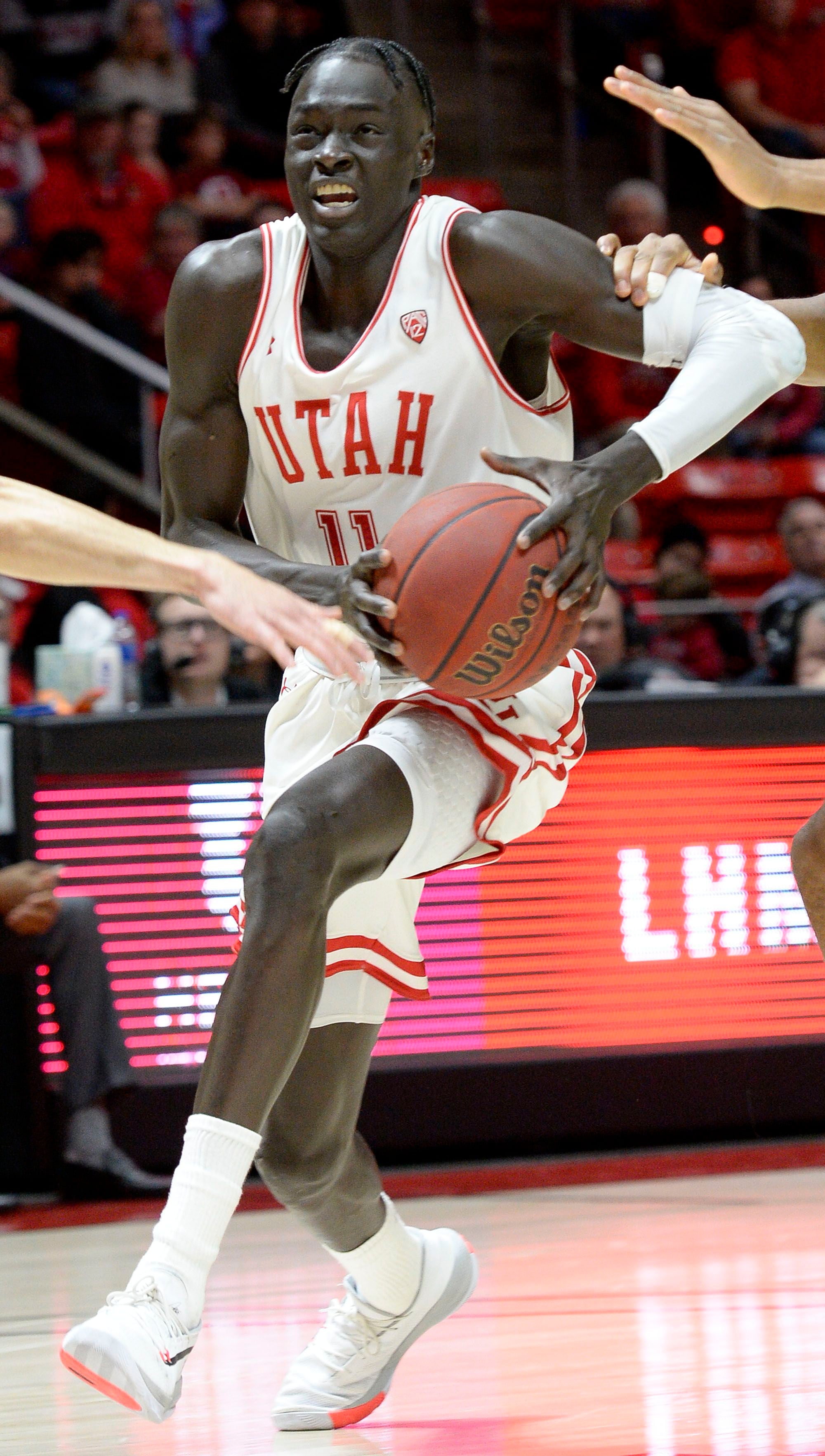


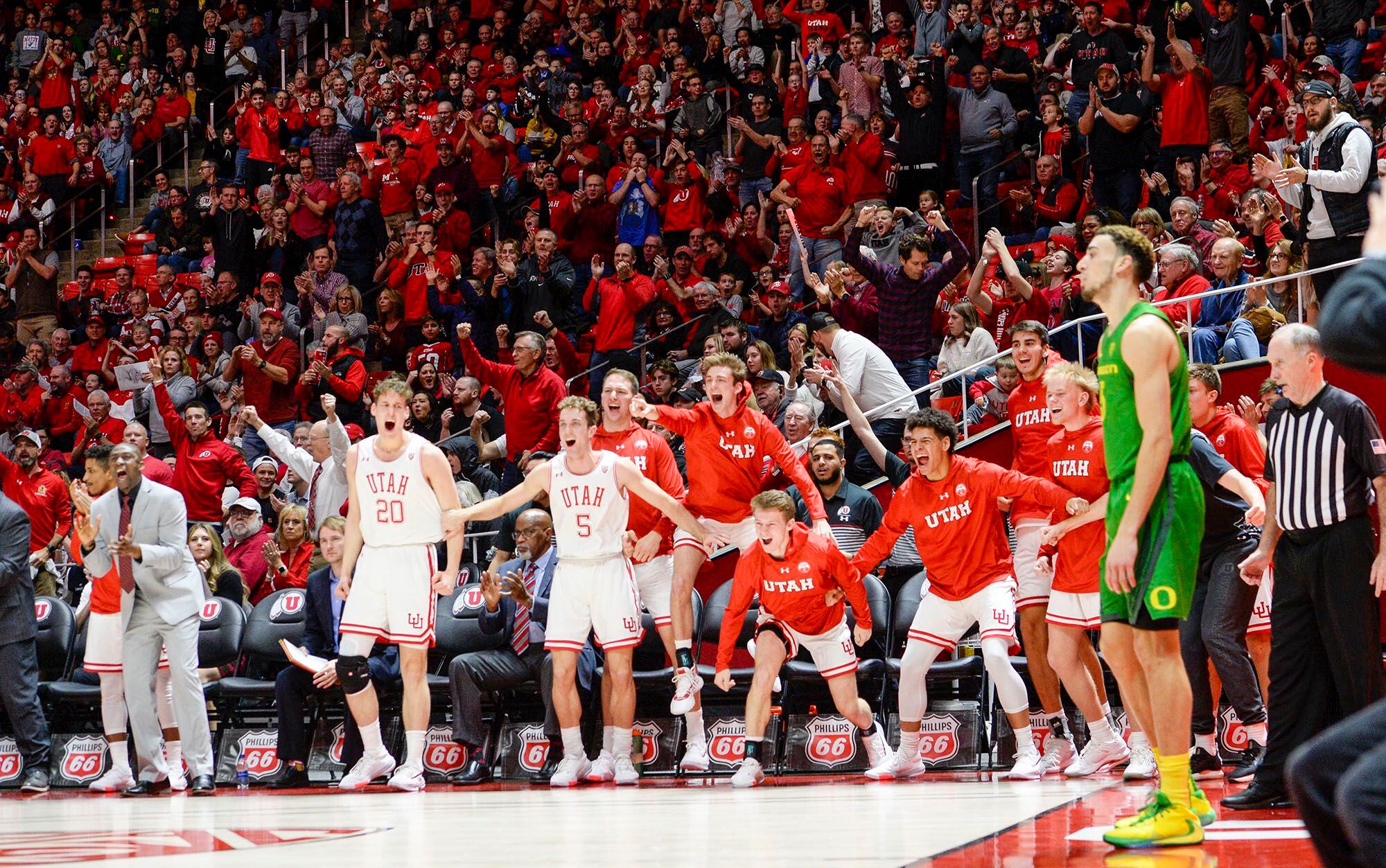
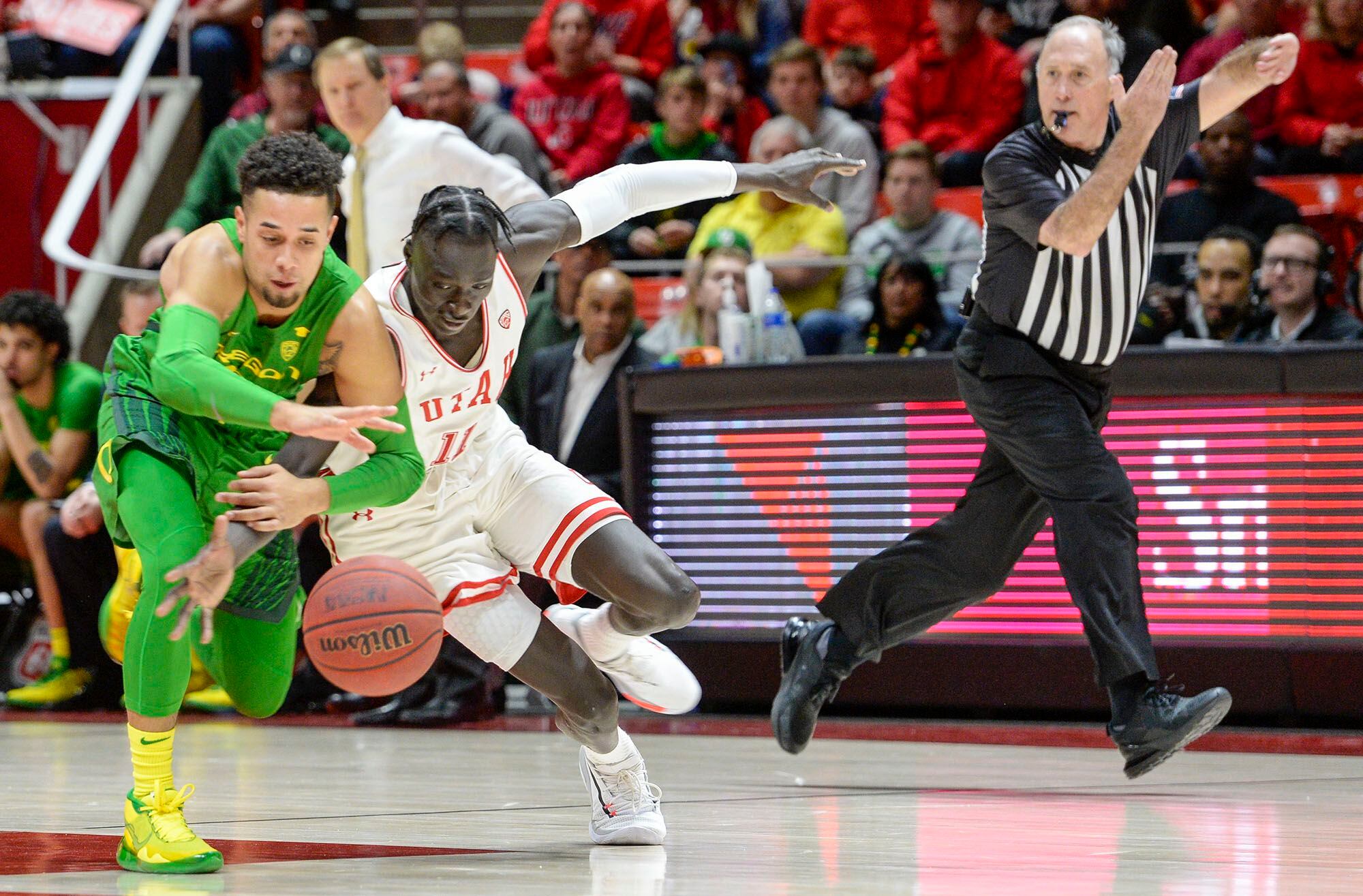

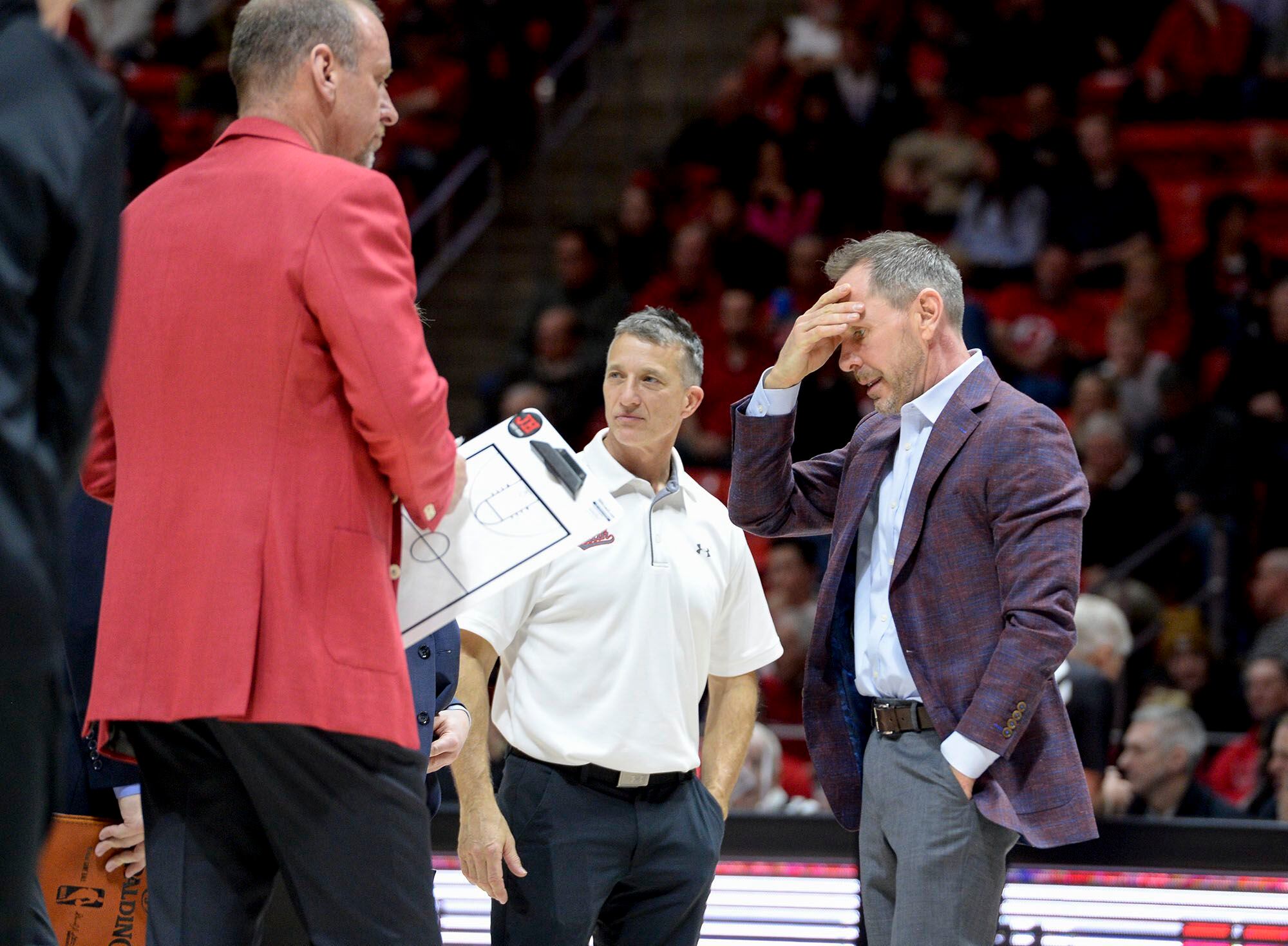
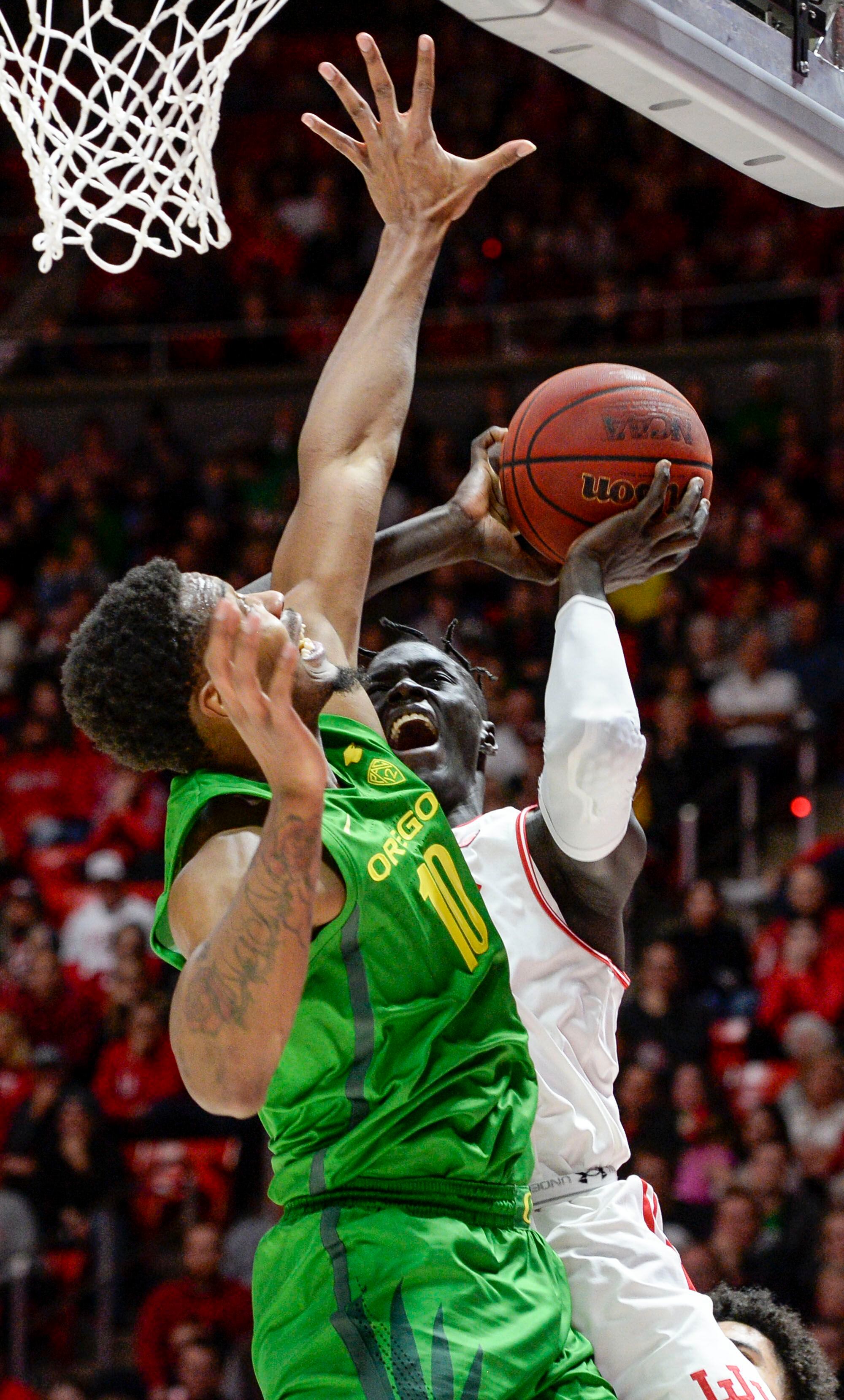
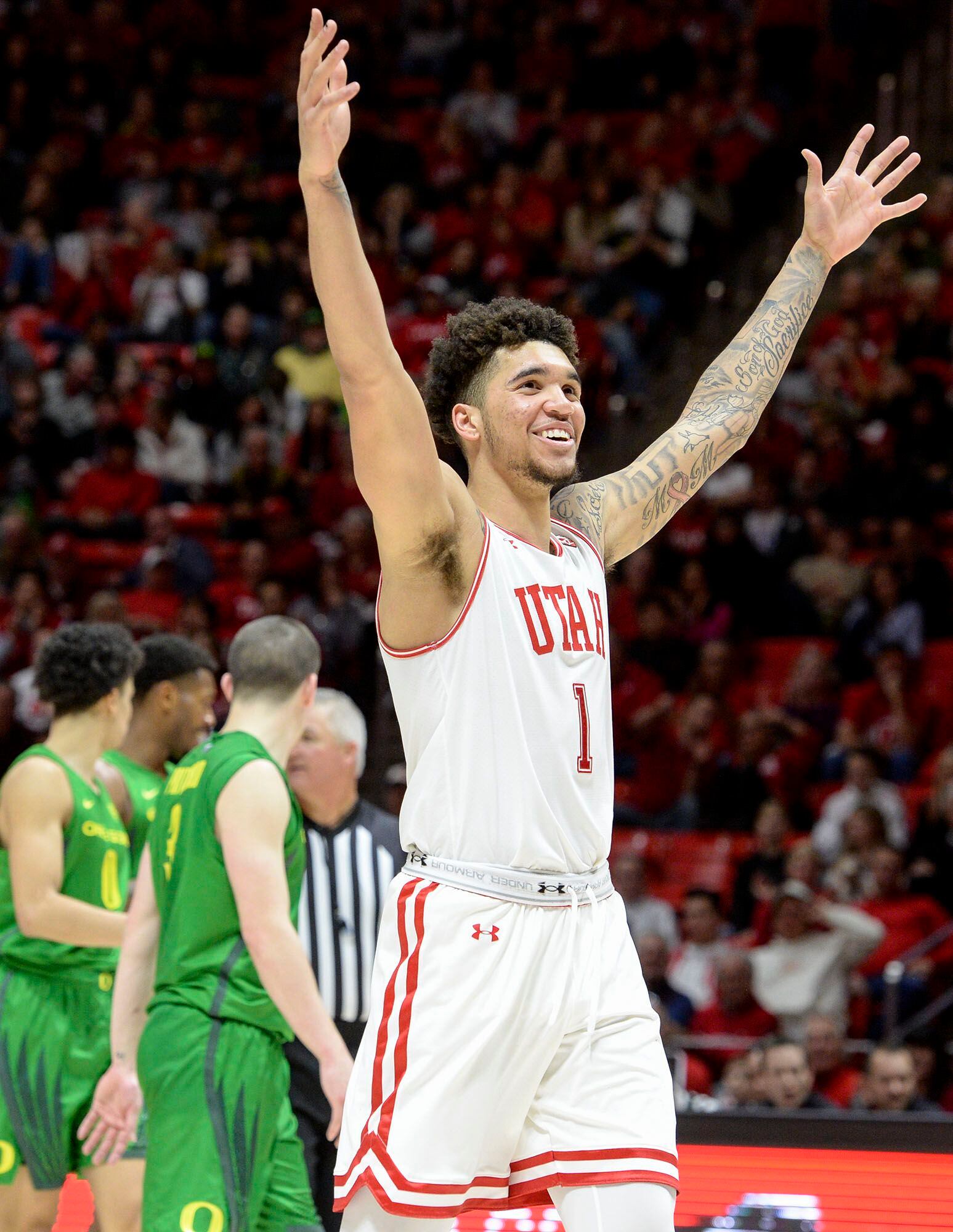
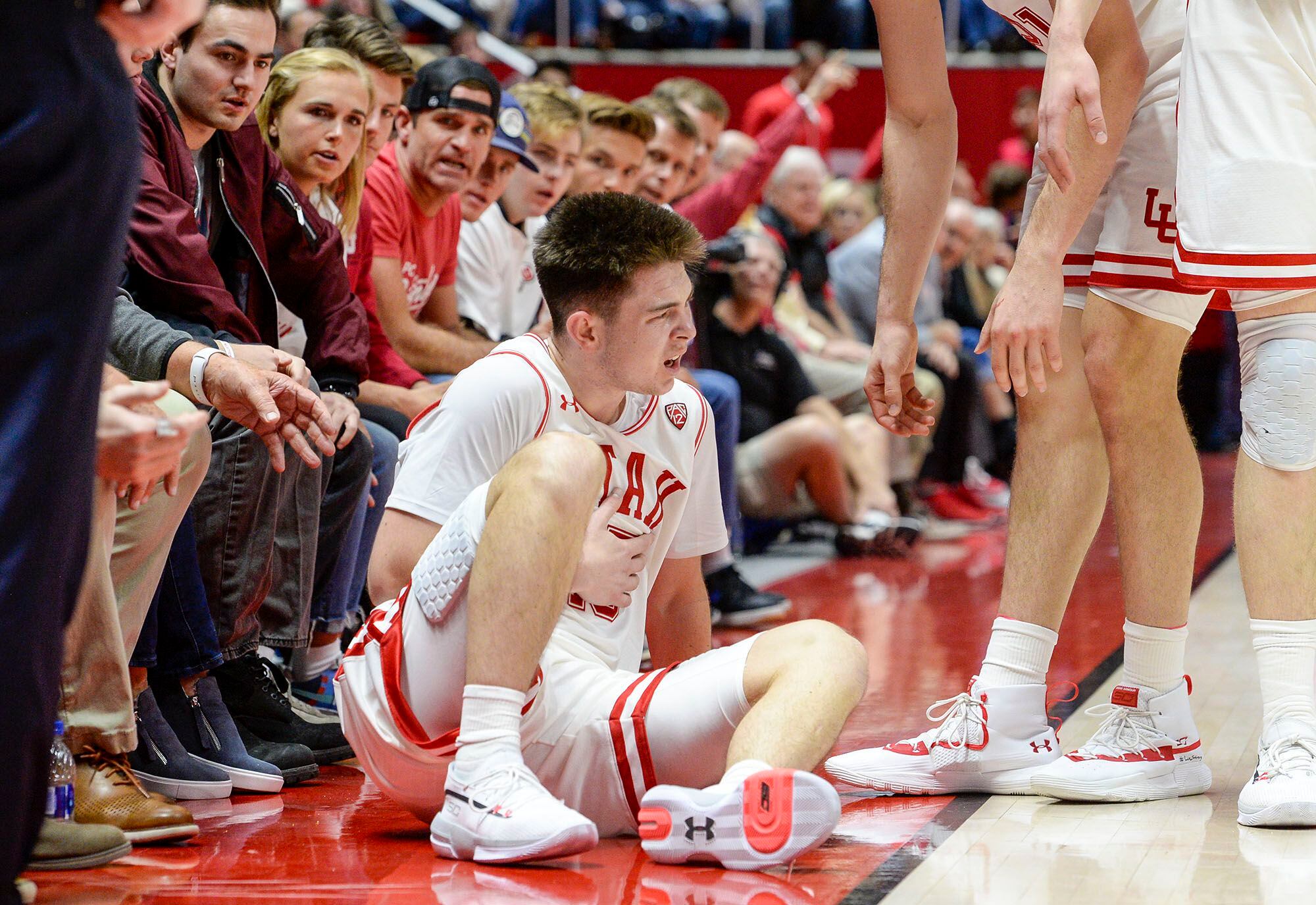
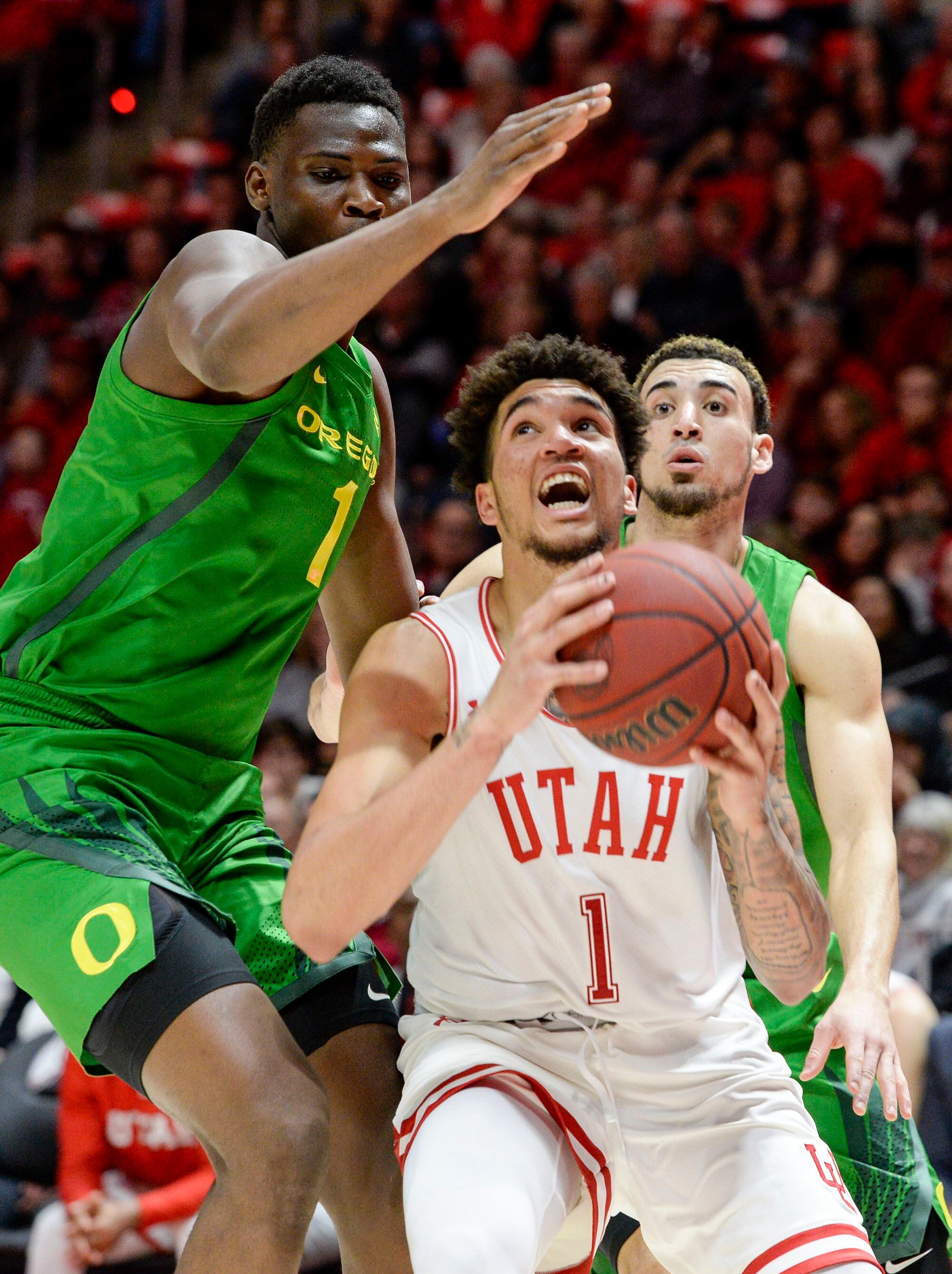

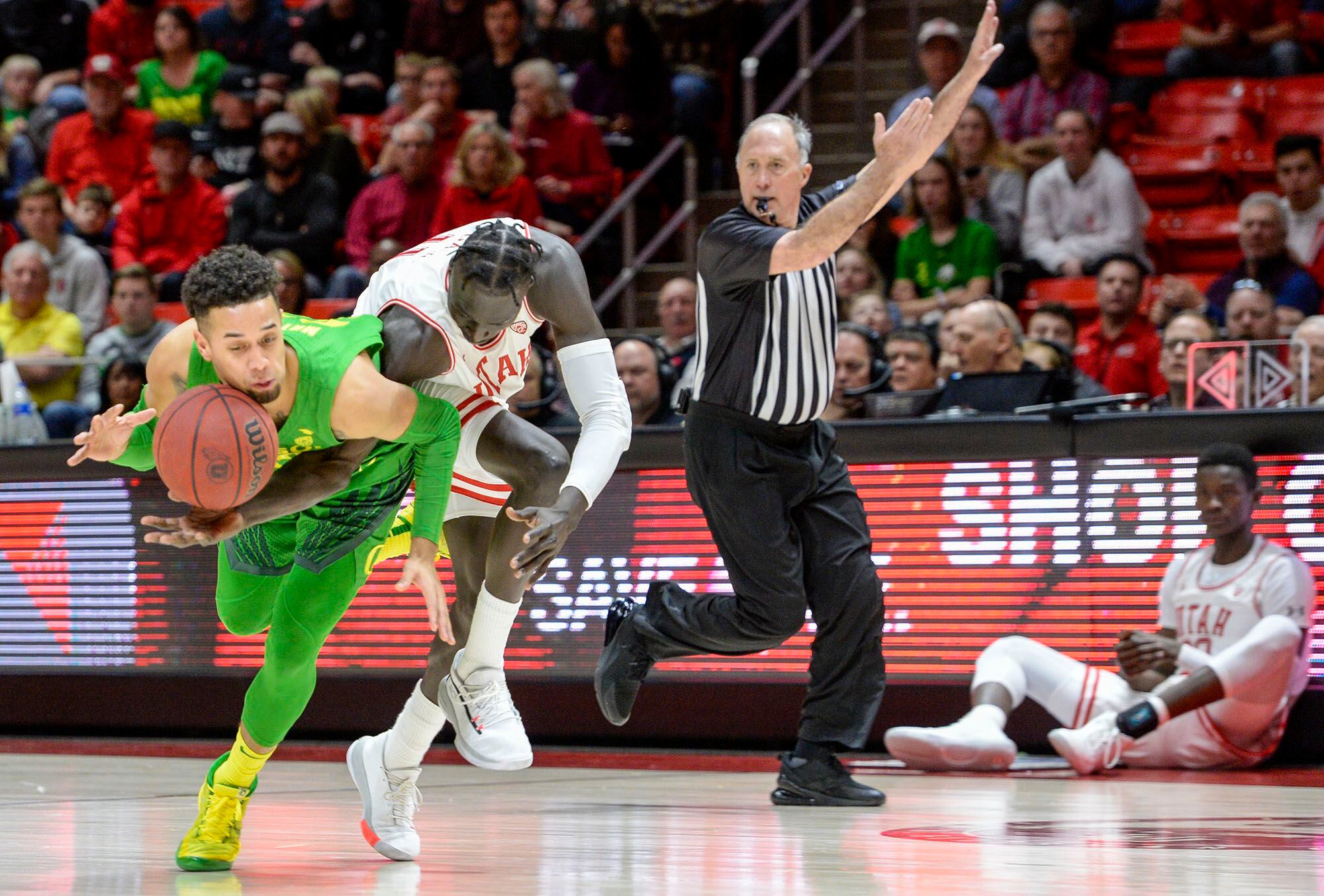
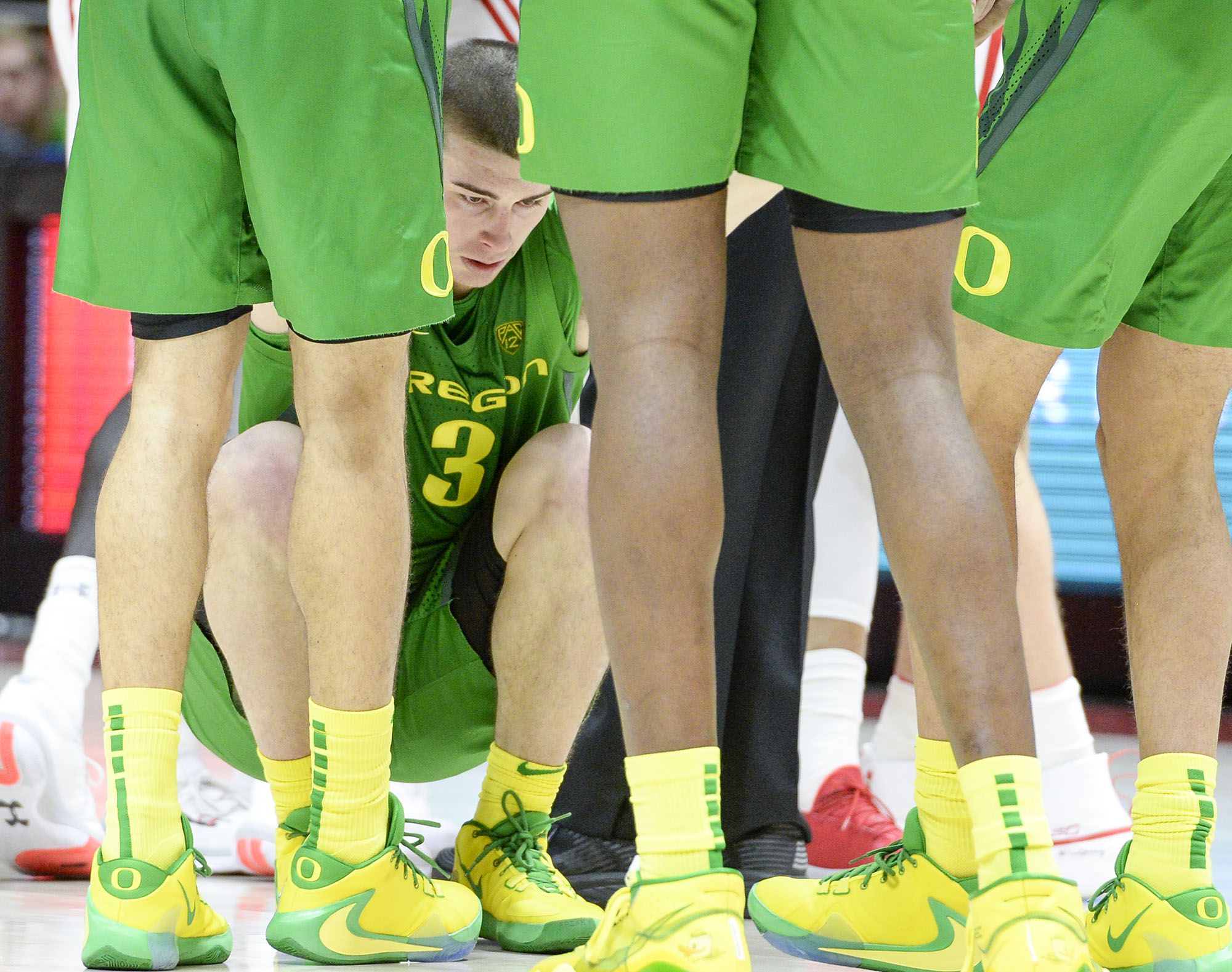
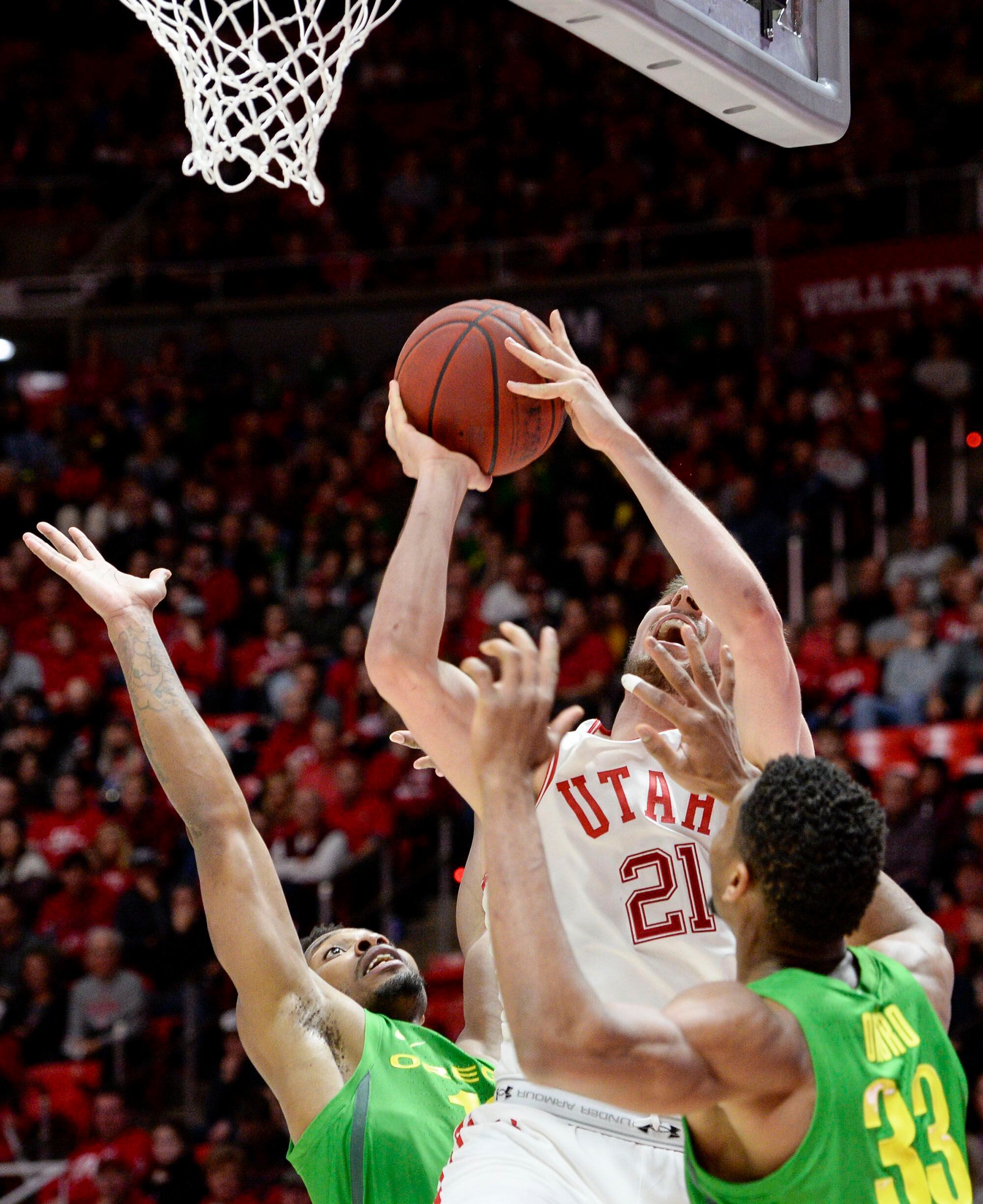
Pick something from Saturday afternoon to harp on, there are options.
The University of Utah got plenty of open looks against Oregon’s matchup zone in the first half, but couldn’t knock down shots. The Utes left too many points at the foul line. The final offensive sequence may have produced a decent shot, but still left something to be desired.
All of these things were factors for an increasingly-capable, albeit young Utes team against an older, experienced, Final Four-caliber Ducks outfit. Whichever one you pick, the bottom line is clear. No. 4 Oregon’s 69-64 win in front of 13,104 at the Huntsman Center was a lost opportunity for the Utes.
“There were a lot of positive things our team did,” Utah coach Larry Krystkowiak said. “Oregon’s always been a positive for us with turnovers, and if you would’ve told me we would’ve turned it over seven times in that game I would have definitely hit the deal button.
“To beat an elite team like that, you’ve got to hit more open shots.”
Whatever shortcomings there were, this game was still Utah’s for the taking as the clock began fading. The Utes (10-4, 1-1 Pac-12) trailed just 61-60 headed for the under-4 media timeout, but Oregon (12-3, 1-1) went on a rush, scoring on three consecutive possessions, all at the rim. The last of those three possessions saw Shakur Juiston score on a layup to give the Ducks a 67-62 lead with 2:56 left.
On a day it yielded 42 points in the paint, shot 9-for-30 from 3-point range, and 13-for-20 from the line, the Utes still trailed by just three late. Out of a timeout, the ball went to Timmy Allen on the left wing. Not the Utes’ top option from the perimeter, Allen had a fair look from there, but the shot was off the front of the rim with 15 seconds left.
Allen had 19 points on 6-for-8 shooting to go along with 10 rebounds, while Both Gach led all scorers with 24 points on 9-for-20 shooting.
Throwing the ball in after getting fouled, Oregon broke the Utah pressure as Chris Duarte, last season’s NJCAA National Player of the Year, put home a dunk for the final margin.
“They guarded our little action and we just got the ball iso,” said freshman point guard Rylan Jones, who finished with six points and four assists, but also four turnovers. “Timmy shot a good shot and when he shot it, I thought he made it. It looked good. We missed a lot of open shots tonight. We got anything we wanted, and we just missed them.”
“We’ve got a handful of specials to try and get a 3-point shot,” Krystkowiak said. “That’s what we were trying to do and Oregon defended it properly. I can’t fault Timmy, it was open. He’s not our top 3-point shooter, but he did make three the other day in a game and I don’t know that we were going to get a better look.”
Down five with the ball inside 8:00 to play, Mikael Jantunen hit a 3-pointer from straightaway, plus there was a flagrant one foul away from the ball on Juiston. Allen hit both free throws to tie the game at 56-56 with 7:35 to play.
Momentum and the lead changed hands for a three-minute stretch afterward.
The lead changed hands eight times in the game, but Utah led for a total of only 2:06.
E.A. Stern: A suggested resolution for 2020: Owning up to it
Kids, sit down for a minute. Your father and I need to apologize. What’s more, we need to apologize not only to you, but to your future children.
I know, I know. The idea of our talking to your future children is pretty silly, but we need to try.
Remember when we told you to spend your allowance wisely? Remember when we learned about “usury” in the Bible? We haven’t followed that advice. I keep saying “we.” What I mean is your father and me and politicians, those of us in the country who vote and make decisions.
Let me try to explain. Over the years we’ve gotten used to buying all sorts of things. Some we buy as a family, others we buy as a government. We bought roads and defense, clothes and houses, doctor visits and retirement, movies and games, travel and education. But, kids, for many of the things our government has, we didn’t figure out how to pay for them first.
Some economists — people who study money and trade — think this is a big crisis; others do not. For a while we’ve left the problem to the politicians, but now I realize — as we’ve told you for years — that in our hearts we know what’s right and what’s wrong. And pretending for years and years to have more money than you actually do have — whether you’re a country or a family — is wrong.
See all these things we have? Truth is, a lot of them we don’t really own. Our country gets them by borrowing from other countries.
We’ve always stressed the importance of making good on our debts. But to start doing that, we first have to stop borrowing a very large amount every year. During emergencies like war, disasters or when our economy is in trouble, it might make sense to borrow. But now, when there aren’t any emergencies and most people have jobs, we are borrowing even more.
Our politicians haven’t been willing to face these debts. Some of them say they’re willing to make hard choices, but not enough of them agree at one time to address the issue. Instead, they pass the buck, as it’s called. Rather than raise taxes, eliminate waste and reduce spending, politicians choose being popular over preventing the crisis. Eventually we’ll owe more than we can pay off. When that happens, it could be very bad, and whoever are the citizens and leaders at that time will have to deal with the problem, and we fear it will be you, or your children.
I wish I could say that politicians and adults who vote are going to stop borrowing and pretending we can do and have things we don’t have money for, but I can’t. In the middle of the night I think about going to a government building and shouting about this, but I can’t picture it having much effect and, in the light of morning, we take you to school, go to work, come home and spend time with you. Maybe everybody is thinking that everybody else should do with less, but that they themselves don’t need to.
I know this sounds funny, but it’s almost like we invaded ourselves with another country by giving them our money bit by bit. Please remember what we’ve said about how to handle money; it will be important when it’s time for you to make decisions. I know it will.
I just can’t say exactly when.

E.A. Stern was born and raised in Los Angeles, is a professor in the Department of Performing Arts at Weber State University, and lives in Ogden.
Quin Snyder wants to see Jazz players get comfortable with taking early open looks
Orlando, Fla. • There was a sequence in the Jazz’s game against the Magic back on Dec. 17 in Salt Lake City where Donovan Mitchell drove the lane, drew the defense and found Bojan Bogdanovic open for a corner 3.
But instead of taking the shot, Bogey swung it to Royce O’Neale, who passed up an open 3 to swing it to Joe Ingles, who passed up an open 3 to kick it to Mitchell in the other corner, where he finally drained one from beyond the arc.
While the Jazz are big practitioners of the idea of eschewing a good look for a potentially great one, coach Quin Snyder said before Saturday’s game against the Magic at the Amway Center that his players could actually stand to do a little less of that.
“We've been a team that's tried to kind of create advantages offensively and then continue to exploit them. We've had to really work on guys feeling like an open shot early in the clock is a good shot,” Snyder said. “If Bojan comes down the floor and he's got an open 3 on the wing after one pass, I want him to take that shot.”
Asked if having a lineup loaded with such prolific shooters should theoretically make offense easier, Snyder quipped, “I think everybody would like more shooting than less.”
He then made it a point to mention that getting center Rudy Gobert on the move contributes to the process of generating open looks.
“We talk about Rudy in pick-and-roll, but Rudy getting out in transition and running to the rim really draws a crowd, too,” Snyder said. “And then those shots are open, and having guys that can shoot them is really important.”
‘Such a unique defensive talent’
While most of the questions directed to Snyder pregame focused on his team’s offense, the specific questions asked of Magic coach Steve Clifford about his thoughts on the Jazz unsurprisingly tilted toward Utah’s defense.
Asked specifically about the Jazz’s habit of limiting opponents to low passing totals, Clifford spoke in reverent tones about how well the Jazz staff has maximized the scheme around Gobert.
“As much as anybody, they play dribble-handoffs, pick-and-rolls, even a lot of catch-and-shoot plays with just two guys, and the other guys stay home,” Clifford said. “They take full advantage. Gobert is such a unique defensive talent, and they build their whole defense around him. So there’s not gonna be as many passes thrown.”
Utahns protest potential war with Iran — including some local Iranian-Americans worried for their families


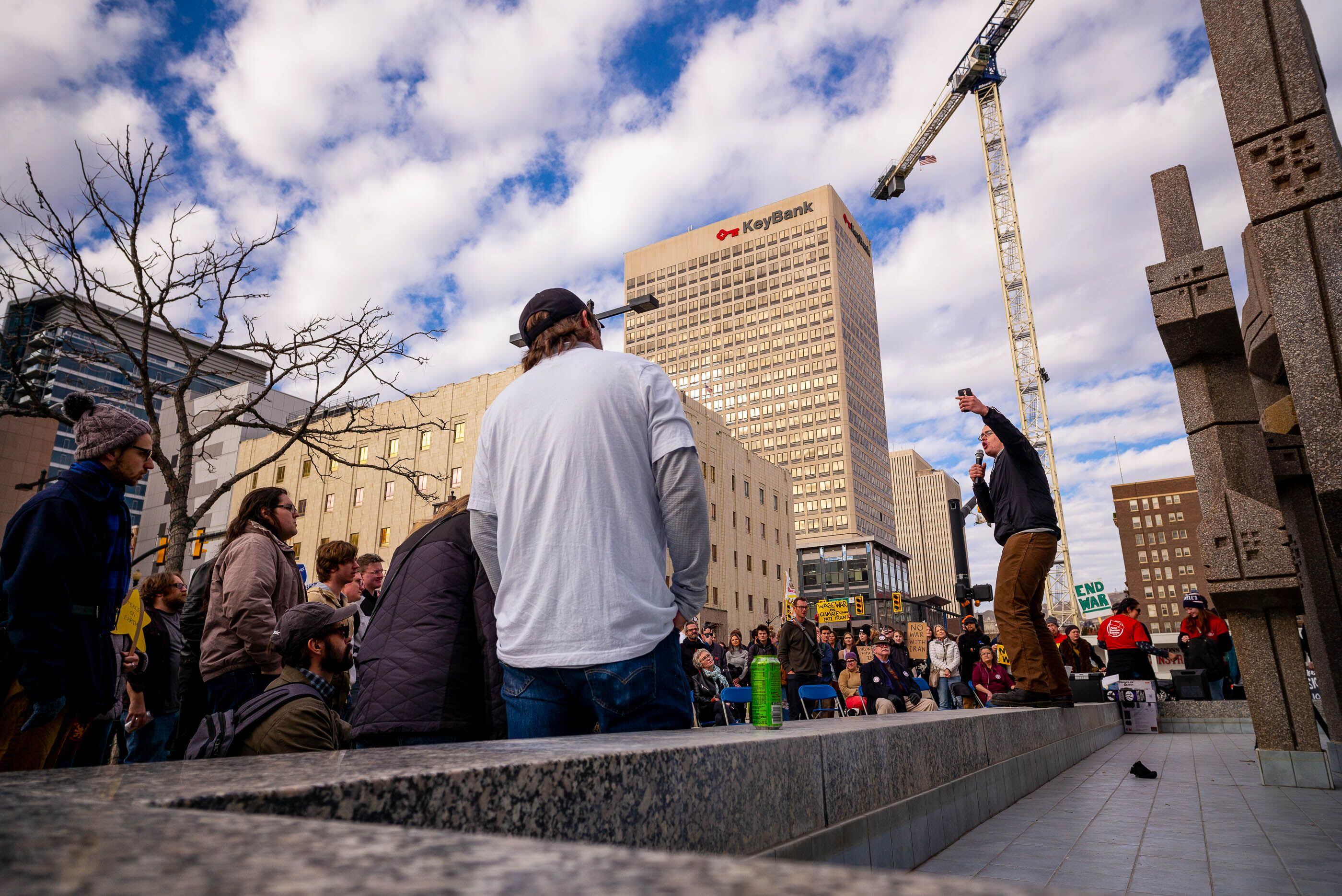
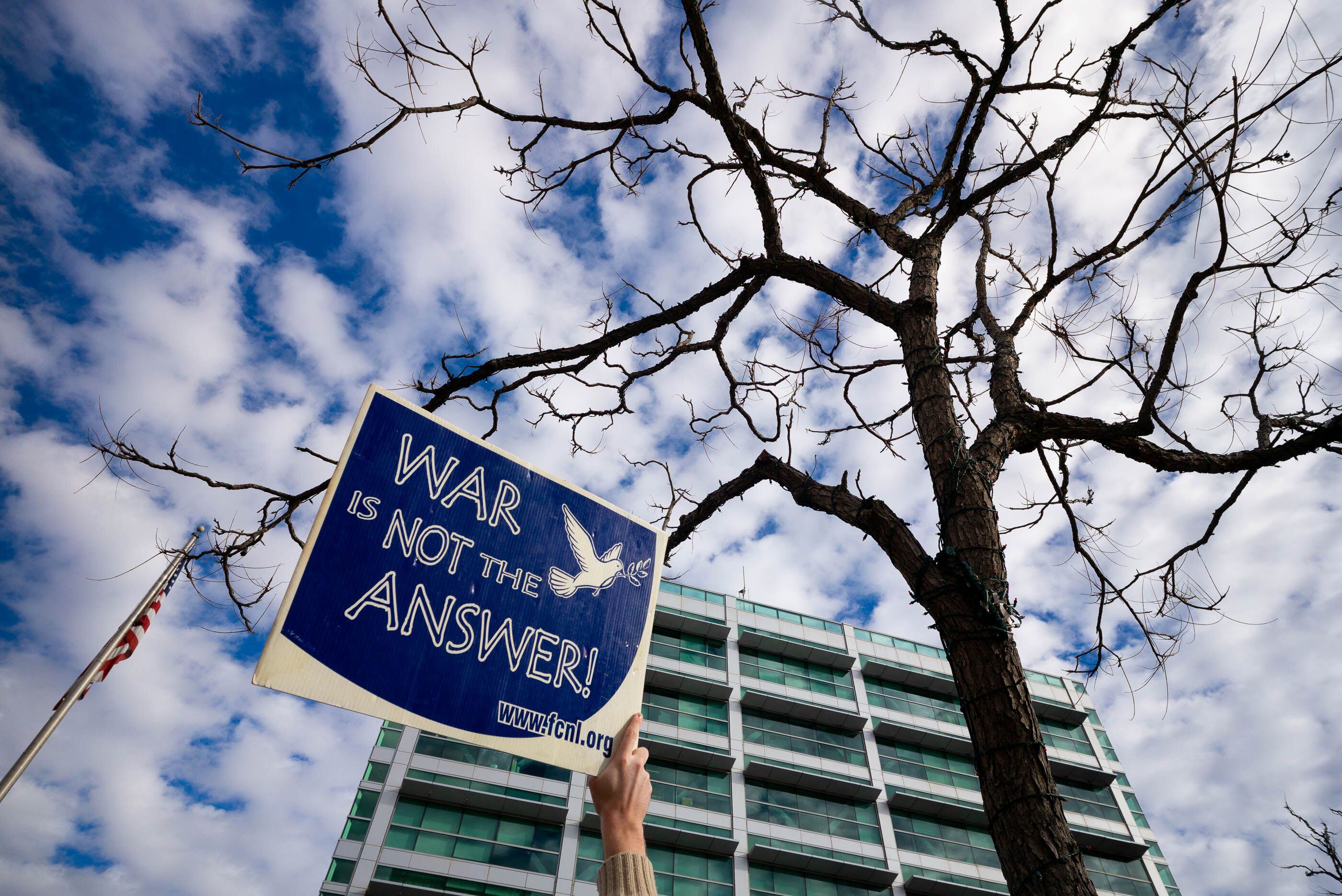


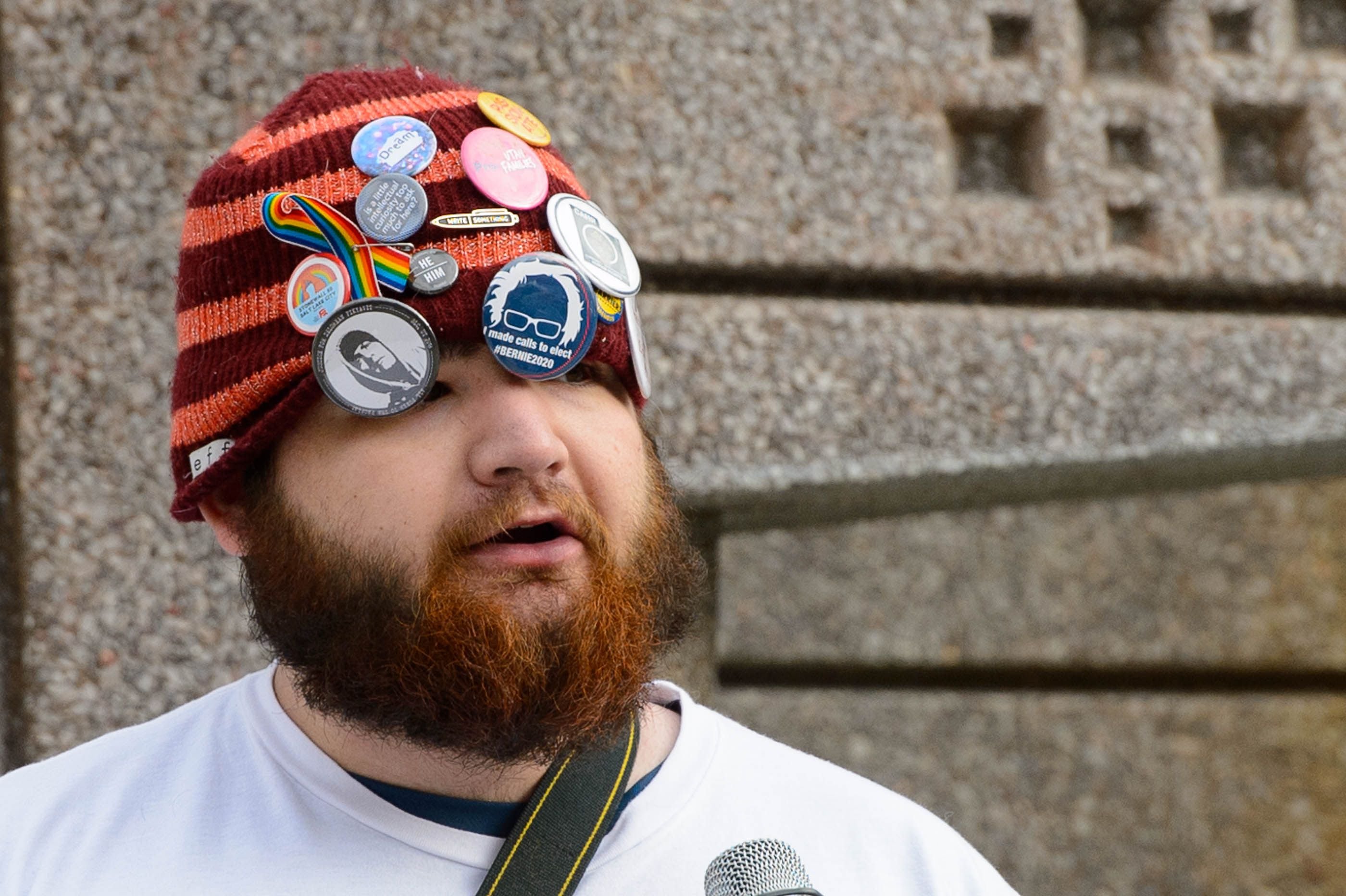

It’s been a whirlwind of emotions for Arya Barkesseh since it was announced Friday that President Donald Trump had ordered a U.S. strike that killed a top Iranian general.
The 18-year-old Iranian-American from Salt Lake City scrolled through social media and found memes joking about how Qassem Soleimani’s death will lead to World War III. Others posted photos of Iranian models with objectifying captions.
It seemed as if people here were desensitized to the gravity of the situation, he said at an anti-war protest that drew about 170 people who chanted and waved signs in downtown Salt Lake City on Saturday.
But as people posted flippant remarks online, Barkesseh was calling his family members who are in Iran. He says he worries not just for them, but for his own future.
Barkesseh was born and raised in Utah, but has dual citizenship. He worries that if Trump’s decision leads to war, he could be forced to go to Iran and fight for that country.
The 18-year-old West High School student just finished applying to colleges two days ago. That’s the future he wants for himself — not fighting a war in Iran.
“I don’t want to return to my homeland,” he told protesters, “for a war I don’t want to fight.”

Iran has promised to seek revenge for the airstrike near Baghdad’s airport that killed Soleimani, according to the Associated Press, and the U.S. announced Friday it was sending more troops to the region as tensions continued to increase as a result of the killing.
Those who attended Saturday’s protest worried that this was just the beginning that would lead to a war with Iran — a conflict they didn’t support.
Their chants of “Hands off Iran!” and “1, 2, 3, 4, we won’t fight a rich man’s war!” echoed off the Wallace F. Bennett federal building during the chilly afternoon protest. They held signs as they stood on the street corner that read “Peace on Earth,” “No war with Iran” and “War is not the answer.”

One young boy’s sign was scrawled with the words, “Arms are for hugging.”
Those who showed up Saturday said they hoped their government leaders saw the protest and recognized that there are people in the community who oppose going to war with Iran.
Many of those were young people like Barkesseh, either still in high school or new graduates.
Grace Lang, 16, said she has friends who have immigrated from Iran who still have family there. She’s worried for them. “I just don’t want them harmed,” she said. “I don’t want America to meddle in it.”
Her friend, 18-year-old Kristen Jensen, said she wanted to protest to show that they cared. It meant more to her, she said, to show up in person than to merely post a message of support on social media.
“I just wanted to show that solidarity,” she said, “that even though we aren’t going to be affected in any way that we are standing with those people.”
But there were some that worried a potential war could have a trickle-down effect and harm Utahns. Alborz Ghandehari, a 31-year-old Iranian-American from Salt Lake City, said he’s concerned that Trump’s actions could lead to more discrimination and racial hostility toward Iranian-Americans.

Ghandehari said he hopes that leaders look at people like those who gathered Saturday and recognize a community who doesn’t want war. They are worried about things like health care and jobs and being able to pay their rent. They want taxpayer dollars to go to those issues — not fund a military budget for a war with Iran.
Like Barkesseh and so many others, Ghandehari also has aunts and uncles and family in Iran.
He said that he’s been able to speak on the phone with his family, and he said they are feeling scared.
“People are feeling like they don’t know what is happening,” he said. “All of sudden, since the events of Thursday night, we’ve been thrown into chaos and our lives have just sort of been put on hold. People are very afraid.”
Trump says 52 targets already lined up if Iran retaliates

WEST PALM BEACH, Fla. (AP) — President Donald Trump issued a stark warning to Iran on Saturday, threatening to hit dozens of targets in the Islamic Republic “very fast and very hard” if it retaliates for the targeted killing of the head of Iran's elite Quds Force.
The series of tweets came as the White House sent to Congress a formal notification under the War Powers Act of the drone strike on Gen. Qassem Soleimani, a senior administration official said. U.S. law required notification within 48 hours of the introduction of American forces into an armed conflict or a situation that could lead to war.
The notification was classified and it was not known if a public version would be released. House Speaker Nancy Pelosi said the classified document “suggests Congress and the American people are being left in the dark about our national security.”
In unusually specific language, Trump tweeted that his administration had already targeted 52 Iranian sites, “some at a very high level & important to Iran & the Iranian culture." He linked the number of sites to the number of hostages, also 52, held by Iran for nearly 15 months after protesters overran the U.S. Embassy in Tehran in 1979.
Thousands of Iranians lined Baghdad streets Saturday for the funeral procession for Soleimani. The Islamic Republic has vowed revenge for the Trump-ordered airstrike that killed him and several senior Iraqi militants early Friday Baghdad time.
Trump appeared to respond to such threats with tweets justifying Soleimani's killing and matching the bellicose language from Iran.
“Iran is talking very boldly about targeting certain USA assets as revenge for our ridding the world of their terrorist leader who had just killed an American, & badly wounded many others, not to mention all of the people he had killed over his lifetime, including recently hundreds of Iranian protesters,"the president tweeted. "He was already attacking our Embassy, and preparing for additional hits in other locations. Iran has been nothing but problems for many years.”
Trump also warned: "The USA wants no more threats!”
Trump’s reference to targeting sites “important to Iran & the Iranian culture” could raise questions about whether striking such targets would violate international agreements. The American Red Cross notes on its website that the Geneva Conventions of 1949 and their additional protocols, ratified by scores of nations in recent years, states that “cultural objects and places of worship” may not be attacked and outlaws “indiscriminate attacks on civilian populations.”
Democratic presidential candidate Joe Biden, campaigning in Iowa, questioned whether Trump was acting alone or with support of allies. “We have no idea – I have no idea – whether he has any plan at all,” the former vice president told reporters Saturday night. “But when he makes statements like that, it just seems to me to be he’s going off on a tweet storm on his own, and it’s incredibly dangerous and irresponsible.”
The notification document sent Saturday to congressional leadership, the House speaker and the Senate president pro tempore was entirely classified, according to a senior Democratic aide and a congressional aide. The aides and the senior administration official were not authorized to discuss the matter publicly and requested anonymity.
In a statement, Pelosi said the “highly unusual” decision to classify the document compounds concerns from Congress.
“This document prompts serious and urgent questions about the timing, manner and justification of the Administration’s decision to engage in hostilities against Iran,” Pelosi said and reiterated her call for a full briefing for lawmakers.
Pelosi said the Trump administration’s “provocative, escalatory and disproportionate military engagement continues to put servicemembers, diplomats and citizens of America and our allies in danger.” She called on the administration “for an immediate, comprehensive briefing of the full Congress on military engagement related to Iran and next steps under consideration.”
___
Daniel reported from Washington. AP Congressional Correspondent Lisa Mascaro contributed to this report.
The Triple Team: Donovan Mitchell, who carried the Jazz to another win, is playing like one of the best in the league
Three thoughts on the Utah Jazz’s 109-96 win over the Orlando Magic from Salt Lake Tribune Jazz beat writer Andy Larsen.
1. Donovan Mitchell is playing at an top-10 level
Donovan Mitchell was incredible tonight, the biggest reason the Jazz went into Orlando and won a game against a team that had won their last two by 20+ points. He scored 32 points on 14-21 shooting, 4-7 from three, and added six assists.
A lot of it was just incredible midrange shotmaking from Mitchell: on floaters, on pull-up jumpers. Long-time readers know that I’d prefer Mitchell to get other shots, but if he makes them at this level, then it doesn’t matter — in the same way it’s fine if, say, Kawhi Leonard takes a bunch of tough midrangers.
Obviously, shotmaking is a key piece of development. But there were some other things Mitchell did that showed how much he’s improved in other ways, too. First, there’s his search dribble, which has made him much more effective as a passer. He bends the defense by dribbling through the paint, then takes advantage of that movement to find open shooters.
🗣🗣🗣WILL IT BLEND?!
— Utah Jazz (@utahjazz) January 5, 2020
((((yes)))) pic.twitter.com/VhxBFYYdFc
Critically, keeping that dribble alive has reduced turnovers, too. He only had two tonight, and I think it’s because he’s keeping his feet more frequently: he’s not jumping in the air and looking to connect on difficult passes.
Mitchell was 10th on the NBA’s last MVP ladder, and it’s easy to see why: the Jazz have won five in a row, and Mitchell is leading them extremely well on the offensive end.
There’s also some talk about Mitchell being more of a point guard, even when Mike Conley comes back. I’m not quite there yet, mostly because Mitchell pick and roll skills aren’t either. But given how good he’s been, allocating some of Conley’s possessions from early in the season to Mitchell makes a lot of sense.
2. 3-point attack breaks game wide open
The Jazz had just a one-point lead entering the 4th quarter, but they broke it open quickly thanks to hot 3-point shooting, especially from Georges Niang. The Jazz were 6-24 from deep with about 14 minutes left to go, and then went 10-16 the rest of the way.
It was actually humorous to watch Quin Snyder’s postgame press conference respond to questions about the change in 3-point shooting. “What happened to turn it around?,” Orlando’s press wanted to know. And the answer was essentially “Nothing.” The Jazz kept shooting even though they were missing them early, and then they started making them late. Not too complicated.
Fans get really frustrated when 3-point shots don’t go in, often asking for the team to go inside, because the 3-point attack seems not to be working. But this game is a perfect example of why it’s a good idea to keep shooting, eventually, the game will turn around.
Anyway, credit to Niang, who was so hot there that the Jazz started running him off multiple screens to try to get open 3-point looks for him. He’s now shooting 45.8% from deep this season, and given his 41% shooting last year, it’s probably not a complete fluke.
📹| @georgesniang20 was an absolute spark off the bench 🎇
— Utah Jazz (@utahjazz) January 5, 2020
15p | 5 3pm | 5r | 3a | 16 min pic.twitter.com/SzPve41xmf
He did it in a variety of situations, too. Of course, there were multiple drive-and-kick catch-and-shoots. But on one, he ran to the corner in transition and quickly shot the ball, getting ahead of the Magic defense. On another, he played pick and pop with Mitchell, getting the open look that way. And finally, while he did have one heat check, when the defense overcorrected and guarded him instead of Joe Ingles, Niang found Ingles for another 3-point make. It’s good play from Georges.
3. Rudy Gobert passing in the short roll
Rudy Gobert is a terrific pick and roll player, that much everyone knows. But all pick and roll situations aren’t identical: of course, there’s the short-range lob finish he’s got down that defenses are terrified of. What happens when the defense takes that away, by sending a man to get in Gobert’s way?
Typically, Gobert has struggled in those situations. He’s very capable of catching the ball about 15 feet away and going to the hoop if there’s no one in front of him, but if there is, that’s when we’ve seen charges, or poorly attempted floaters, or turnovers.
That’s why this point of development is important for Gobert: he’s doing a better job of recognizing the player in front of him and where he’s come from, and then hitting the open player. Here’s one example from early in the game:
Nicely done! It seems easy, but it is a legitimate skill to find that pass early and deliver it on target. That’s something that Derrick Favors really developed over the course of his Jazz career, and in recent games, he’s been excellent at doing it with the Pelicans. If Gobert can do it as well, it makes the Jazz even harder to guard, especially given their corner three conversion percentage.
Childs leads BYU to WCC-opening 63-38 victory over Loyola Marymount
Provo • Maybe both teams were still in holiday mode.
Maybe it was just one of those games.
But despite Brigham Young and Loyola Marymount universities combining for only 101 points, the Cougars came away happy.
The Cougars (12-4, 1-0 West Coast Conference) beat the Lions (7-9, 1-1 WCC) 63-38 on Saturday night at the Marriott Center in BYU’s WCC opener.
“I can’t tell you guys how proud I am of our team that those guys, despite the frustration and muddiness and some guys being frustrated with the ball movement and play calling and everything else, that these guys competed on the defense end every single possession,” Cougars coach Mark Pope said. “It’s a beautiful marker for this group of guys this season.”
Senior foward Yoeli Childs led all scorers with 19 points and added 12 rebounds, while senior guard Jake Toolson contributed 13 points, four assists and five steals.
The Cougars held the Lions to their lowest point total of the season. It was only the third time since 2010 that they held an opponent to 38 points or less, per Sports Reference.
Despite an anemic first half offensively in which BYU shot just 3 of 14 from the 3-point line, the team’s defensive effort is what helped it gain some separation before halftime. TJ Haws, Toolson and Childs all made 3s as part of a 13-4 run to close the first 20 minutes.
“We can’t let what’s happening offensively dictate the energy that we have defensively,” Childs said. “In this case, we were able to kind of right through what we were dealing with offensively and just kind of buckle down and get stops. That kind of translated to the other end.”
One example that was indicative of defense leading to offense was when Childs blocked the 3-point attempt of an LMU player and converted a dunk at the other end on the fast break. That sequence gave the Cougars a 15-point lead with less than five minutes left in the game.
BYU missed its first seven 3-point attempts but ended up 8 of 24 from that distance. When the Cougars made their runs to blow open the game, their threes were falling.
“We don’t stop shooting shots just because we start slow or whatever,” Toolson said. “We take open shots, we try to own every shot, and then we’re able to make the next eight out of 17. We’re not going to stop shooting open shots because they’re not falling for a little bit. We’re just going keep taking the good ones and sharing the ball.”
Childs said he took it upon himself to play more aggressively when shots weren’t falling for the Cougars early on. He ended the night missing only five shots from the field. Seven of his eight makes were 2-pointers.
“I think I was just trying to be more assertive in getting my positioning in the paint,” Childs said. “I think the guards did a great job of finding me and the coaches did a good job of really emphasizing getting to the paint, whether it was from a post catch or a drive-and-kick game, being more aggressive. I think our mentality was just to be more aggressive getting to the rim. I think that’s what helped.”
Senior guard Zac Seljaas gave the Cougars their first lead of the game after he stole the ball and took it to the basket himself for a layup and a 9-7 lead with 11:44 left in the first half. BYU never trailed after that.
BYU missed its first four shots from the field. The Cougars’ only points in the first four minutes of the opening half came at the free-throw line.
It was BYU’s sixth straight win, four of which have come by at least 25 points.
Junior Eli Scott led the Lions with 15 points and six rebounds on 6-of-13 shooting in 33 minutes. No other LMU player scored in double figures.
Utah State sees multiple streaks halted despite Neemias Queta’s return to lineup with loss to No. 13 San Diego State
Logan • The lights went out over the court at Dee Glen Smith Spectrum on Saturday night prior to Utah State’s men’s basketball game against San Diego State.
In the darkness, the Aggies crowd shouted, “Welcome to Hell!”
The Spectrum was indeed a version of Dante’s Inferno on Saturday, but only for the Aggies. A 77-68 loss to the Aztecs left them tortured in myriad ways.
The worst of the damage came to the Aggies’ hopes of defending their Mountain West Conference title. USU could have redeemed itself from an abysmal loss to UNLV on Wednesday in conference action with a win over the Aztecs. But a loss to the Aztecs puts the Aggies (13-4, 2-2) deeper in the hole, while SDSU improves to 15-0, 4-0.
The No. 13 Aztecs are one of only two undefeated teams left in the nation alongside No. 12 Clemson and possess the nation’s longest winning streak (15).
That was just the beginning of the damage for Utah State, which also saw numerous streaks of its own go up in flames. The loss was the Aggies’ first at home since Fresno State beat them by a single point on Jan. 9, 2019, a string of 15 straight games. It is also the first time Utah State has dropped back-to-back games since Craig Smith took the reins two years ago.
“Those are some things that are self-inflicted,” Smith said. “And they made us pay, and that’s what great teams do.”
Handing SDSU its first loss this season should have been motivation enough for the Aggies. Yet Utah State entered the game also wanting to shake off its own demons after suffering a 70-53 loss to UNLV on Wednesday in a contest in which Utah State had season lows in rebounds, points, bench points, field-goal percentage, 3-point percentage and assists.
“It’s going to be even more physical and competitive than it might have been. It’s going to be a madhouse, on the floor and in the stands,” SDSU coach Brian Dutcher told the San Diego Union Tribune prior to the game. “Utah State was already going to be tough. [Now] they’re going to be angry and tough.”
Led by 7-foot center Neemias Queta, the Aggies were all that and more for the first 10 minutes of the game.
The Aggies entered the contest with the most rebounds in the NCAA. Queta, who found out just 90 minutes before tipoff that he would be starting and playing in his first game since bruising his knee in a two-point loss to Florida on Dec. 21, seemed intent on keeping them on the highest perch. He had already corralled 10 by halftime and finished with 14 of the team’s 30 boards as well as 15 points, three assists and three steals.
“I was really determined to play this game. I felt like it would be a really good game to be back. San Diego State is a really good team. They’re probably playing the best basketball in the league right now," said Queta, who played a season-high 30 minutes. “I felt like it would be a really good game for me to be back because I could learn from all my mistakes and learn to just trust my knee again.”
After tying 11-all with the Aztecs with 12:16 left to play in the first half, however, USU’s offense seemed to be lacking fuel for the fire. It missed its next seven shots as SDSU went on a 10-1 run over the next five minutes and extended its lead to 11 before a layup by Abel Porter cut that advantage to 34-25 at the half.
It didn’t help the Aggies any that they were shooting only 22 percent from 3-point range, a number that dipped down to 18.2 percent early in the second half. At the final buzzer, Utah State had made just 26 percent of its 3-pointers and 42.6 percent of its attempts from the field. Worse, the Aggies, one of the nation’s top free-throw shooting teams, were just 16 of 24 from the charity stripe for the game. And as senior guard Sam Merrill pointed out, several of those misses were on the front half of a one-and-one.
“The better teams you play, you just can’t afford to go on those kinds of ruts,” Smith said.
The Aztecs, meanwhile, were connecting on 37.5 percent of their long-range attempts and half of their shots from the field in the half. They finished the game shooting better than 50 percent from the field and 45 percent from behind the arc.
Also not playing into the Aggies’ plans for comeback were the three fouls Queta was whistled for in quick succession in the first three minutes of the second half. The third sent him to the bench, where he sat for nearly four minutes as SDSU went on an 11-4 run for a 53-37 lead, its largest of the game.
Back in the game, Queta helped the Aggies pull within seven, capping the run with a monster dunk. But Utah State wouldn’t get any closer than that.
At least one streak is still alive for the Aggies. Namely, Merrill — whom Smith said has been battling an undisclosed injury for more than a week — scored a team-high 26 points for his 91st double-digit game of his career. Abel Porter added nine points and Justin Bean scored eight with a season-low four rebounds. The bench scored a season-low eight points.
Junior guard Malachi Flynn paced the Aztecs with 22 points, including a couple 3-pointers down the stretch to keep the Aggies at bay, and four assists. Matt Mitchell chipped in 19 points and a team-high seven rebounds and Jordan Schakel added 11.
The Aggies will try to get back on track at Air Force on Tuesday at 9 p.m.
STORYLINES
• Neemias Queta returned to the Aggies lineup for the first time since Dec. 21 and grabbed 14 of their 30 rebounds while scoring 15 points
• USU was just five days shy of a year of only winning at the Spectrum. Their last loss there was Jan. 9, 2019, for a streak of 15 straight games.
• No. 13 SDSU shot better than 50 percent from the field and 45 percent from behind the arc in remaining one of two undefeated NCAA Division I teams in the country alongside No. 12 Clemson
NFL roundup: Texans rally past Bills; Titans knock out Patriots
Houston • Deshaun Watson’s teammates talked all week about how they never feel as if they’re out of any game when No. 4 is on the field.
On Saturday Watson showed why the Houston Texans have so much trust in him, when the quarterback’s dazzling performance late after a tough start led them to a playoff victory.
Watson spun out of a would-be sack and coolly completed a pass that set up the winning field goal in overtime as the Texans rallied from a double-digit second-half deficit for a 22-19 victory over the Buffalo Bills in the first round of the playoffs.
DeAndre Hopkins was asked to describe Watson’s play on Saturday to somebody who might have missed the game.
“I hope everyone watched this today, but he’s amazing,” Hopkins said. “You can’t put too many words on it.”
Both teams punted on their first possessions of overtime — the first extra period in an AFC wild-card game since January 2012. On Houston’s next drive, Watson evaded a sack by wriggling away from one defender and bouncing off another before rolling out to find Taiwan Jones for a 34-yard reception to set up first-and-goal.
Watson flexed both arms as the crowd at NRG Stadium went wild — knowing their team was in position to pull off another comeback win to Houston’s playoff history.
“I told myself to stay up. I mean, it’s do-or-die now. I just had to make the play,” Watson said.
Ka’imi Fairbairn then kicked a 28-yard field goal to lift Houston to the victory.
The Texans (11-6) advanced to the divisional round of the playoffs next weekend where they’ll face the Kansas City Chiefs on Sunday.
The Texans got a boost from the return of J.J. Watt, who had a sack that helped spark his team. Houston scored 19 straight points to take the lead before Stephen Hauschka’s 47-yard field goal tied it with 5 seconds left to force overtime.
“We never quit, regardless,” Watson said. “Whatever it takes to get the win. I mean, we’re going to keep fighting.”
Watt was wowed by the play of Watson.
“The play he made at the end of the game — nobody makes that play,” he said. “The guy’s unbelievable. I’m very thankful and lucky to have him as my quarterback. That’s why you play the whole game.”
It was Watt’s first game after sitting out since October with a torn pectoral muscle.
“This is why you come back,” Watt said. “I don’t know if I meant to come back for these many plays or this much extra time, but these feelings, these emotions, these fans, these players, Deshaun Watson and all the guys on this team, this is why you come back.”
The win gives the Texans their first playoff victory since the 2016 season and extends Buffalo’s postseason losing streak to six games, with their most recent playoff win coming in 1995. It’s the first wild-card overtime game since the Broncos beat the Steelers 29-23 in the 2011 season.
The game conjured memories of another huge comeback in a wild-card game. The last time teams from Houston and Buffalo met in the playoffs it was in a game that is known as “The Comeback.” The Bills set an NFL record for the largest comeback in NFL history by rallying from a 32-point deficit for a 41-38 overtime win against the Houston Oilers in a wild-card game in 1993.
This time Josh Allen and the Bills (10-7) used a dominant first half to build a 13-point lead and were up 16-0 in the third quarter, before Allen began to struggle.
“He was just trying to do too much and getting a little bit extreme with what he felt like we needed at the time,” coach Sean McDermott said. “But overall, we just didn’t make enough plays.”
Watson had 247 yards passing and ran for 55 yards and Hopkins had 90 yards receiving. Watson led the Texans to the victory despite being sacked seven times, led by three from Jerry Hughes, and hit 12 other times.
Allen threw for 264 yards, ran for 92 and caught a touchdown pass on a trick play in the first quarter, but often looked rattled late in his playoff debut.
Houston couldn’t get anything going on offense before halftime and had 81 yards in a first half where Hopkins didn’t catch a pass for the first time since Week 16 of the 2017 season.
They were finally able to sustain a drive on their second possession of the third quarter when Hopkins had receptions of 14 and 10 yards to help move the ball. The Texans cut the lead to 10 when Watson dragged two defenders into the end zone on a 20-yard touchdown run.
Watson then dived into the end zone for a 2-point conversion that got Houston within 16-8 with about two minutes left in the third.
The Bills were driving early in the fourth quarter when Allen was sacked by Whitney Mercilus and fumbled, and it was recovered by Jacob Martin at the Buffalo 47. Houston cashed in on the miscue with a 41-yard field goal that cut the lead to 16-11 with about 11 minutes to go.
Watson connected with Carlos Hyde on a 5-yard touchdown pass and Hopkins on a 2-point conversion with about five minutes left to put the Texans on top 19-16. Hopkins had a 41-yard reception earlier in that drive.
The Bills were in field-goal range on their next drive when Allen got a 14-yard penalty for intentional grounding and Buffalo lost a down to bring up fourth down. They went for it and Allen was sacked by Jacob Martin for a 19-yard loss to give Houston the ball back with 1:41 left.
“We didn’t execute how we should have, and we didn’t make as many plays as we should have,” Allen said. “That’s what it really comes down to. They made one more play than us.”
The Texans trailed 13-0 at halftime and Hopkins fumbled on their opening drive of the third quarter to give Buffalo the ball at the Houston 32. Watt sacked Allen for a loss of 8 yards on third down and the Bills settled for a 38-yard field goal to extend the lead to 16-0.
Allen scrambled 42 yards for a first down on Buffalo’s first possession for its longest rush of the season. Two plays later, the Bills used some trickery to take the lead when John Brown threw a 16-yard touchdown pass to Allen to make it 7-0. Brown’s pass was wobbly, but Allen was wide open despite having to slow down to grab it.
It was early in the second quarter when Allen appeared to fumble, and it was recovered by Houston. But the play was reviewed and overturned, giving Buffalo the ball at the Houston 32. The Bills were unable to move the ball after that and made a 40-yard field goal to make it 10-0.
The Bills added another 40-yard field goal at the end of the second quarter to push the lead to 13-0 at halftime.
Titans 20, Patriots 13
Foxborough, Mass. • When the eerie Foxborough fog lifted, it became clear that New England’s reign atop the NFL was ending.
Derrick Henry ensured that with the kind of dominating playoff performance usually reserved for Tom Brady and the Patriots.
Henry rushed for 182 yards and a touchdown while Tennessee’s defense stymied Brady and perhaps ended his championship-filled New England career with a 20-13 wild-card victory Saturday night.
Brady vows to be back on an NFL field next season, but his contract with the Patriots is done.
“I love the Patriots,” the 42-year Brady said, adding about leaving the game after 20 seasons: “I would say it’s pretty unlikely, hopefully unlikely. I love playing football. I don’t know what it looks like moving forward.”
Doing the most moving forward Saturday night was Henry, who had a total of 184 yards rushing in two playoff games two years ago. He nearly got that against the league’s top-ranked defense in boosting the Titans (10-7) into the divisional round at No. 1 seed Baltimore.
“It’s a great win against a great team in a hostile environment,“ Henry said on his 26th birthday. “Credit to my team. I’m just happy we were able to advance.
“We were just locked in. That was our mindset, just coming in here doing what we needed to do in all three phases, stay locked in no matter what happens in the game, and I feel like we did that.”
For sure.
As that dense fog that shrouded Gillette Stadium for the first half dissipated, the Patriots, who made the last three Super Bowls and won two, stalled repeatedly with the ball. They no longer were the bullies on the block — Henry was.
As for this defeat, the Patriots’ fourth as a wild card, Brady noted: “They kind of stopped us in the first half and the second half and we couldn’t get the job done.”
There had been no scoring in the second half when All-Pro Brett Kern’s 58-yard punt that took up 10 of the final 25 seconds rolled down at the New England 1. Brady then was picked by former Patriot Logan Ryan for a 9-yard touchdown to finish off the Patriots (12-5), who at one point were 8-0.
The game’s first three possessions wound up as three long scoring drives. A 29-yard screen pass to James White set up Nick Folk’s 36-yard field goal, but Tennessee answered with a 75-yard march built around Henry. He had no role on the touchdown, Tannehill’s pass to a Harvard man, tight end Anthony Firkser that made it 7-3.
Firkser is the first player from Harvard to score a playoff TD.
New England counterpunched with its own 75-yard drive, taking temporary control of the game by victimizing Tennessee’s defense on the outside. The Titans looked slow trying to protect the flanks as Sony Michel broke off a 25-yard run and White had a 14-yarder.
Julian Edelman finished it with the first rushing touchdown of his 11 pro seasons, a 5-yard dash to the unprotected left side of the Tennessee D.
New England appeared primed for another touchdown after Mohamed Sanu’s 14-yard punt return set up the Patriots at the Titans 47, and they steadily drove to first-and-goal at the 1.
All they got was Folk’s 21-yard field goal as three runs failed. It was the 13th time the Patriots had first-and-goal at the 1 in a playoff game in the Brady era and the first time they failed to get a TD on the drive.
Tannehill led the NFL with a career-best 117.5 passer rating and by averaging 9.6 yards per pass attempt. But he didn’t do a whole lot Saturday night in his first postseason game: 8 of 15 for 72 yards. His awful decision to put the ball up for grabs on the first play of the fourth quarter resulted in Duron Harmon’s interception.
But New England’s spotty attack flopped and never revived. That has not been unusual during the second half of the schedule.
Tannehill’s passing yards were the fewest for a starter since the Ravens’ Joe Flacco had 34 in a wild-card win against the Patriots 10 years ago.
BIRTHDAY BOY
Henry celebrated his birthday by getting the most rushing yards against a Bill Belichick-coached Patriots team in the playoffs. He set an early tone by rushing for 49 of the Titans’ 75 yards on their opening touchdown drive. On the Titans’ second 75-yard TD march, all Henry did was gain every yard: 22 on a screen pass and 53 rushing, including a 1-yard dive into the end zone for a 14-13 halftime lead. Those were Tennessee’s first points in the final two minutes of the opening half since Week 8.
He led the NFL in rushing this season with 1,540 yards in 15 games, the fourth-most rushing yards in franchise history. Henry also ran for 16 TDs, second most in team history.
Titans coach Mike Vrabel, a star linebacker for New England who won three Super Bowl rings, is a rare member of the Belichick coaching tree to defeat the Patriots’ longtime coach head to head. Another of those, Houston’s Bill O’Brien, also did it this season — and the Texans advanced to the divisional round earlier Saturday by beating Buffalo in overtime.
State colleges: Utah Valley rallies, but falls to Kansas City 68-63
Kansas City, Mo. • Jahshire Hardnett came off the bench to tally 17 points to lead Kansas City to a 68-63 win over Utah Valley on Saturday night.
Jordan Giles had 16 points for Kansas City (9-7, 2-0 Western Athletic Conference), which won its fourth consecutive game. Javan White added 13 points, nine rebounds and three blocks. Rob Whitfield had 10 points for the hosts.
Brandon Averette had 16 points for the Wolverines (7-10, 1-1), who fell behind by 16 points in the second half before regaining the lead in the final minute but were outscored 7-0 to end the game. TJ Washington added 13 points. Isaiah White had 12 points and seven rebounds.
Kansas City matches up against Texas Rio Grande Valley on the road on Thursday. Utah Valley plays Seattle on the road next Saturday.
Northern Arizona 72, Weber State 64 • In Flagstaff, Ariz., Brooks DeBisschop had 18 points off the bench to lift Northern Arizona to a win over Weber State.
Cameron Satterwhite had 15 points for Northern Arizona (7-5, 1-2 Big Sky Conference). Nik Mains added 13 points. Cameron Shelton had 11 points and eight rebounds for the home team.
Cody John scored a season-high 24 points for the Wildcats (5-9, 1-2). Michal Kozak added 14 points and eight rebounds. Judah Jordan had five steals.
Jerrick Harding scored only 6 points despite entering the contest as the Wildcats’ leading scorer at 19 points per game. He failed to make a shot from 3-point range (0 of 4).
Women’s basketball
Portland 57, BYU 48 • In Provo, Sara Hamson’s third double-double of the season wasn’t enough for the Cougars in a loss to the Pilots at the Marriott Center.
Hamson finished 11 points, 13 rebounds and seven blocks. Paisley Johnson led the Cougars (7-7, 2-2 West Coast Conference) with 14 points to go along with eight rebounds. Maria Albiero added 13 points.
Voters in town once run by polygamous sect probably broke the law when they cast ballots, prosecutor says, but charges are unlikely
A county prosecutor says there’s evidence that as many as 22 people who were improperly registered to vote in Colorado City, Ariz., cast ballots in the 2018 general election.
Mohave County Attorney Matt Smith said more could have illegally voted in that election, but investigators gathered evidence of only 15 to 22 improper voters in a town where the Census Bureau says there are about 4,800 people. Smith does not expect to file any charges partly because he can’t find all those voters.
“The main thing is for it not to happen again,” Smith said, “because I don’t want it to impact future elections.”
Colorado City and adjacent Hildale, Utah, population 2,900, are the longtime home of the polygamous Fundamentalist Church of Jesus Christ of Latter-Day Saints. After three candidates friendly to the FLDS won seats on the Colorado City Town Council in the Nov. 6, 2018, election, questions arose of whether some of the ballots were cast by people who no longer lived at the addresses on their voter registrations or no longer lived in Colorado City at all.
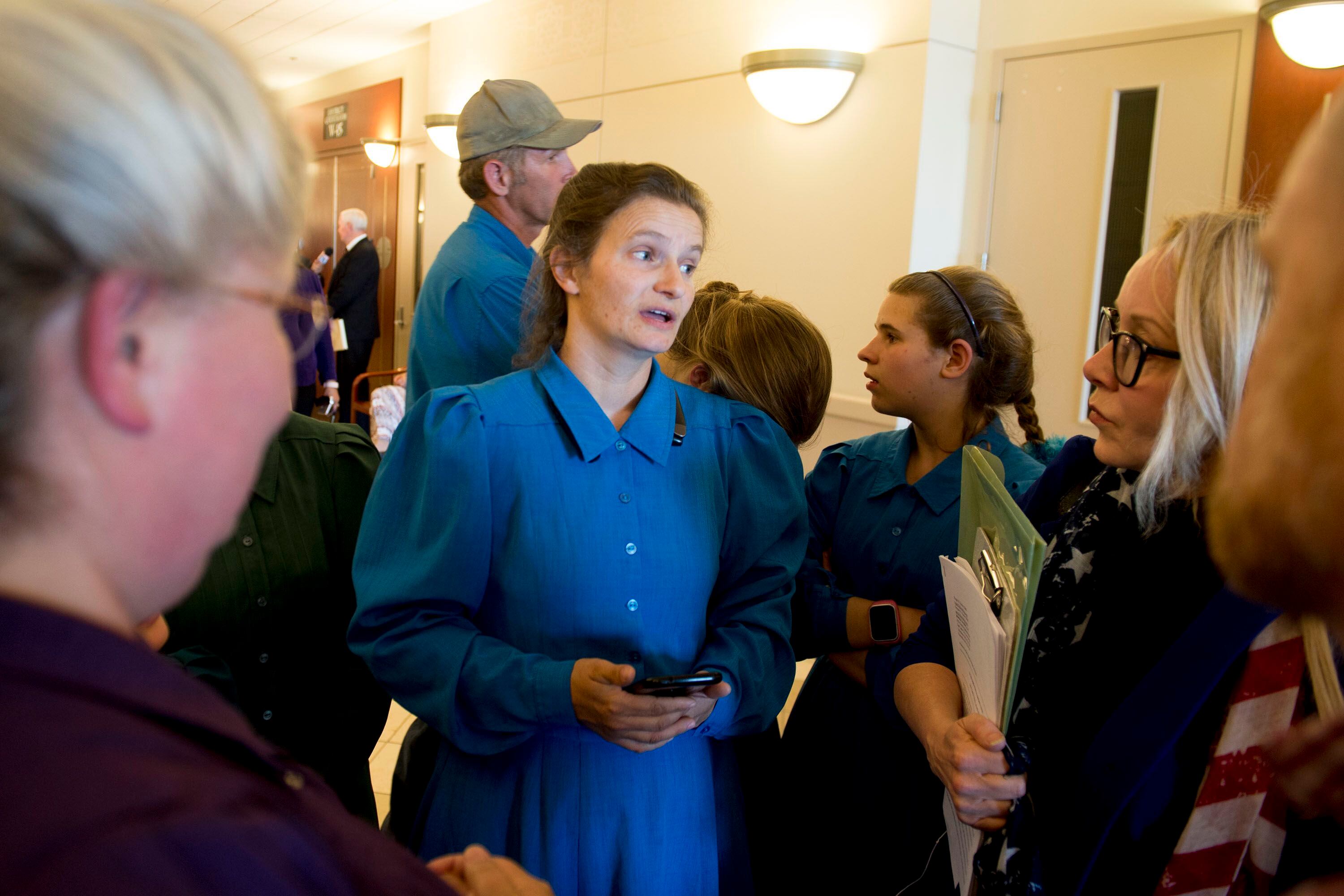
Lori Barlow acknowledges she was one person whose address was out of date yet voted anyway. She still lives in Colorado City in what she says is temporary housing.
Smith and Mohave County, Barlow said, have failed to appreciate the housing challenges in Colorado City, where many people loyal to imprisoned FLDS President Warren Jeffs have chosen to be evicted rather than deal with a local land trust that owns many of the homes.
“I did not change my address,” Barlow said, “because I had nothing to change it to.”
Marion Timpson, who missed a seat on the Colorado City Town Council, said he appreciates Mohave County’s investigation, but he believes offenders should be prosecuted if they voted in violation of the law.
“You’re trying to create a democracy where a theocracy existed,” Timpson said. “Someone needs to be held accountable.”
Who controls municipal government has been an issue in Hildale and Colorado City, collectively known as Short Creek, since they were incorporated. A federal jury in 2014 and another in 2016 ruled after civil trials that the towns effectively functioned under the direction of Jeffs and his loyalists and discriminated against nonbelievers. A judge appointed monitors to review the municipalities’ functions and make regular reports to him.
The FLDS also lost control of a land trust, called the United Effort Plan, that once owned most of the homes and commercial properties in the two towns. Those parcels were handed over to the trust as an act of Mormon fundamentalist faith, and the FLDS have refused to sign agreements and pay fees that would allow them to remain in the homes.
Meanwhile, hundreds, perhaps thousands, of people have left the FLDS in the past 20 years, changing the composition of Short Creek. A slate of non-FLDS candidates, including one for mayor, won elections in Hildale in 2017.
Six months after the FLDS-backed candidates prevailed in Colorado City in 2018, Smith asked the Mohave County Board of Supervisors for $8,000 to investigate accusations of voter fraud. The supervisors agreed.
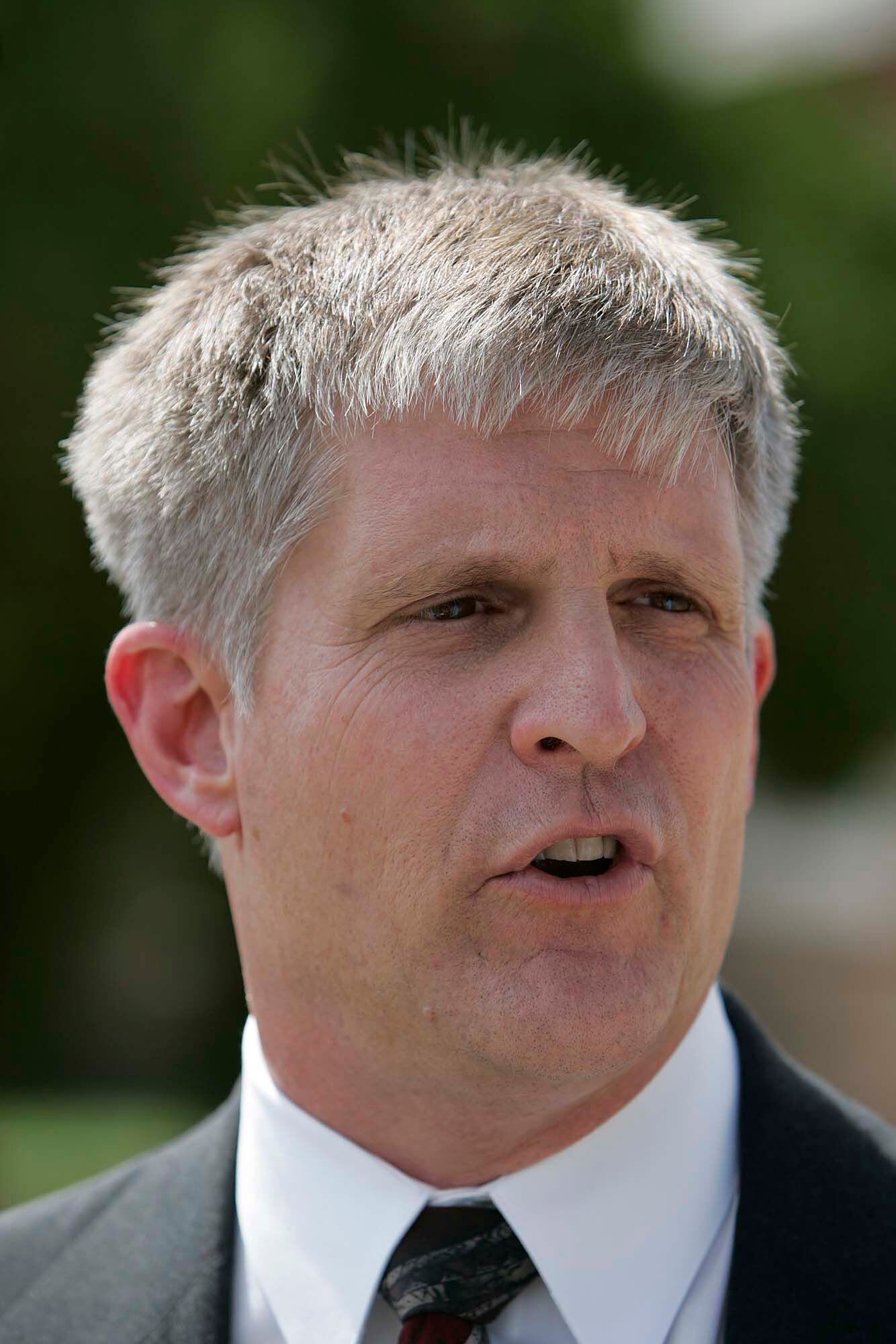
In a phone interview, Smith said investigators looked at a list of about 30 names supplied by Colorado City residents concerned about the vote. Investigators knocked on the listed addresses.
In many of those cases, Smith said, the person living at the home told investigators something to the effect of “ 'Yeah, I know who that is, but they don’t live here and haven’t lived here during the time the election took place.’ ”
Investigators were unable to find and question many of these voters, Smith said, and that’s one reason he doesn’t plan to file charges. It could be that the voters, like Barlow, reside at a different address in Colorado City. That would still be a violation of Arizona law, Smith said, but not one he is inclined to prosecute.
Smith said he would prosecute someone who permanently resided out of state — and farther away than Hildale — and voted in Colorado City, but he hasn’t been able to find such a case. Arizona law makes “knowingly” voting in a city or precinct to which that person is not entitled to vote a felony punishable by up to a year in prison.
Smith said he found no evidence FLDS faithful conspired to swing the election.
“Without finding the people,” Smith said, “talking to them and knowing what they did, it would be sheer speculation to guess.”

It’s also unclear if any improper registrations tilted the results in Colorado City or elsewhere in Arizona. The Town Council election was at large, with the top three finishers taking seats.
Third-place finisher Joanne Shapley received 208 votes — 39 more than fourth-place finisher Timpson.
Barlow said she and a group called Voices for Dignity, consisting of FLDS followers and their supporters, spoke to officials at Mohave County before the election. They were told they could vote under a provision in Arizona law that allows homeless and displaced people to cast ballots. However, Barlow said, it was not explained to them how that provision also requires voters to change their registered address to a public location such as a homeless shelter, a post office or a street corner.
Barlow said Voices for Dignity held an education campaign before the election, telling people they needed to be registered to vote at their current addresses when possible. She said some FLDS followers chose not to vote because they didn’t know which address to list and feared that if they cast ballots, “their integrity would be called into question.”
Utah sees Latter-day Saint slowdown and membership numbers drop in Salt Lake County
The Church of Jesus Christ of Latter-day Saints recorded its smallest membership growth in Utah in at least three decades this past year. And, in 2019, 14 of the state’s 29 counties saw the actual number of members decline.
The most significant drop came in Salt Lake County, which saw the roster of Latter-day Saints fall by 6,710 even as the state’s largest county grew by 10,000 people.
What’s happening in the heart of Mormondom? Why would Utah, a state with a vibrant economy and strong, consistent population growth, experience a sudden slowdown in the membership of its predominant faith?
That’s a hard question to answer because the organization with the most insight — the church itself — declined to offer any context.
But a review by The Salt Lake Tribune, relying on the insights of demographers and close observers of the church, indicates that the membership stagnation is likely due to a rise in resignations among disaffected and largely inactive members and major demographic trends seen in Utah, such as families having fewer children and more people, many of whom are not Latter-day Saints, moving here for jobs.
“I would likely argue that 2019 represents a statistical anomaly in which a variety of factors combined to create a ‘bad’ year for membership growth,” said Matt Martinich, a Latter-day Saint and independent demographer based in Colorado, who reviewed the data for The Tribune.
The church has been handing over county-by-county membership numbers to Utah officials for decades. The Tribune has access to this data from 1989 forward. Demographers use this information to help craft population estimates, combining it with insights taken from IRS data, school enrollment and other sources.
These Latter-day Saint numbers include members for whom the church has a definitive address and does not take into consideration a person’s activity level.
The church provided the 2019 data, which goes from Oct. 1, 2018, to Sept. 30, 2019, to The Tribune, but through a spokesman declined a request for an interview with a church demographer or any other official to help explain these surprising figures.
Here are some numbers that stand out:
- The church added 4,909 members in Utah in 2019, while the state estimates Utah’s population grew by 53,000. That’s a church growth rate of 0.25%, the lowest since The Tribune has tracked this data. This marks only the second time that church rolls grew by less than 10,000. The first was 2018, when membership rose by 9,067.
- Salt Lake County saw its Latter-day Saint membership decline by 6,710. The second-biggest drop was in Davis County, where membership decreased by 838. Utah County, home to church-owned Brigham Young University, saw the biggest numerical increase in members at 8,487, followed by Washington County at 2,441.
- Utah is now 60.68% Latter-day Saint. This stat relies on state population estimates and could change after the official 2020 Census count.
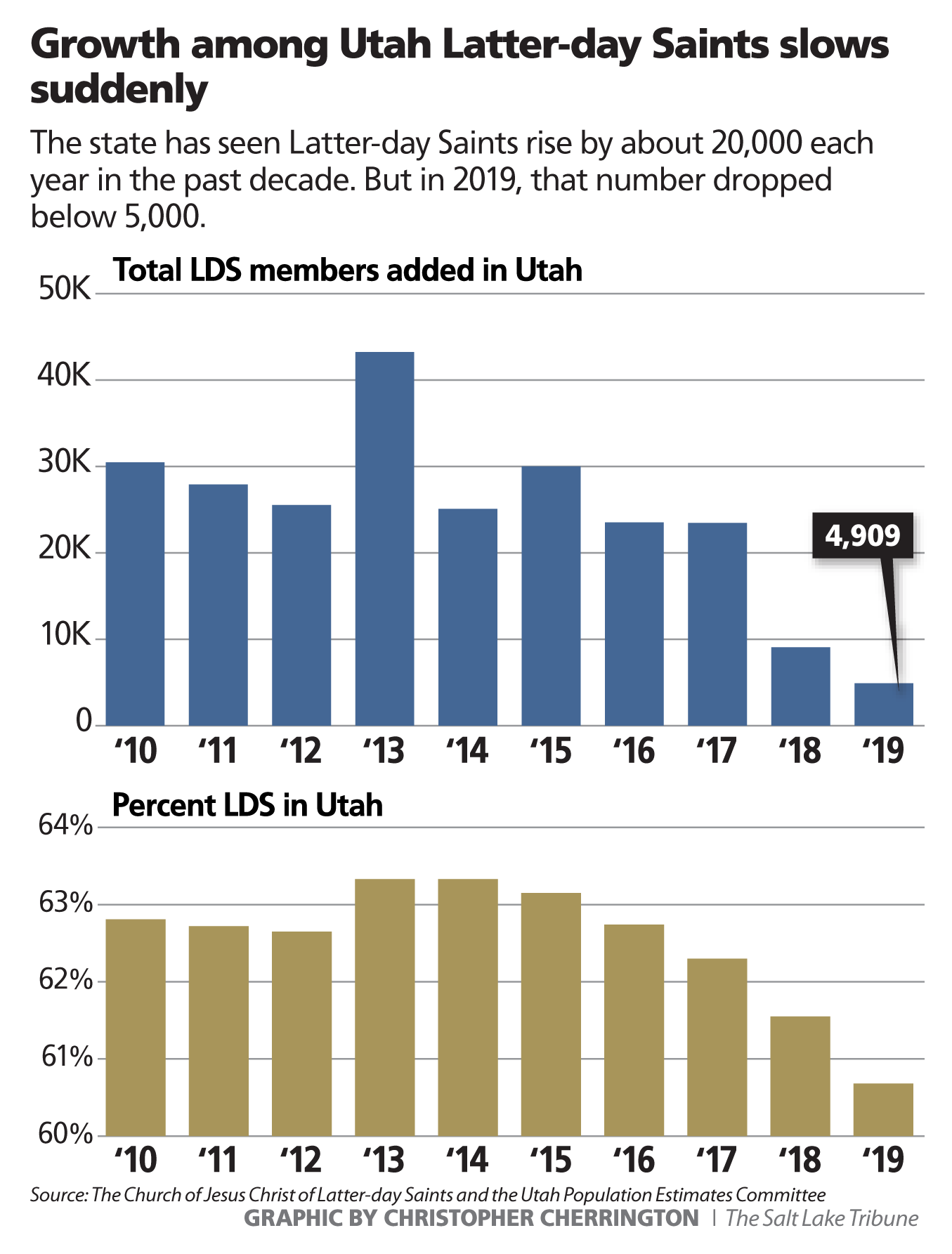
To assess what might be driving this erosion, let’s start by identifying the ways members might be dropped from a county’s tally. They could move to another area. They could die. They could be excommunicated. They could have been added as a baby but dropped when they were never baptized. Or they could have requested that the church remove their names from the membership rolls.
Some long-term demographic trends are clearly at play in Utah that would result in a slowing of growth among Latter-day Saints, but they don’t fully explain the quick drop-off in 2018 and 2019, according to demographers such as Pam Perlich, with the University of Utah’s Gardner Policy Institute.
Members moving
Perlich, who leads the committee that creates the state’s population estimates, has tracked moving patterns in the state. Generally, they show new residents flocking to Salt Lake County who tend to be younger and are less likely to be Latter-day Saints, with families, and presumably many Latter-day Saint families, moving from Salt Lake County to suburban areas, including fast-growing Utah County.
“This is the internal migration pattern in Utah,” she said.
But Salt Lake County’s reduction in Latter-day Saints hasn’t coincided with any unexplained rise in members in any other county. Instead, it has coincided with an overall slowdown in growth. Davis and Weber counties also saw member declines. Utah County’s growth rate among members even dipped. It had held relatively steady at 2% or more for the whole decade, until 2018, when it slumped to 1.7%. In 2019, it was 1.6%.
So, while it is true that some members are likely moving out of Salt Lake County, this doesn’t fully explain the 2019 numbers.
Members dying
During this decade, every county witnessed another big shift. Births continued to decline, a sign of the state’s shrinking fertility rate, while deaths went up.
When you combine births and deaths, you get what demographers call the “natural increase.” In 2010, Utah’s natural increase was roughly 38,600 people. In 2019, it was 28,600.
Fewer births and more funerals likely impact Latter-day Saint membership in the state, Perlich said.
“As we get older, the probability of death goes up,” she said. And those older generations are more likely to resemble old Utah — white, from bigger families and more likely to be Mormon.
Utah’s dropping fertility rate also likely means that Latter-day Saint families that once had four, five or six kids, may have two or three — though how pronounced an impact this has is hard to gauge.
“We don’t have fertility rates by religion,” Perlich points out.
In either case, this is a slow decadelong trend, which clearly plays a part in these numbers but by themselves doesn’t fully explain the slide in member growth.

Members being excommunicated
It happens, of course. Church leaders force out members for a variety of reasons from criminal convictions to adultery to protesting too aggressively against church decisions. But is it possible that excommunications in Utah, and in Salt Lake County in particular, have risen significantly in the past few years? Probably not.
“Given the cultural politics in the state of Utah, if there were a spike in excommunications, we would have heard about it,” said Patrick Mason, head of Mormon studies at Utah State University.
Members blessed but not baptized
It is possible that some of the slowdown could be from people who were blessed as a baby but never baptized. This is generally an indication of activity level within the faith, particularly among those who are in their child-rearing years. Without numbers from the church, however, that’s a hard one to track. And Martinich argues that Utah’s activity level hasn’t fallen suddenly.
“Interestingly, there is a lot of data that suggests that things are improving perhaps with member activity and participation,” the independent demographer said in mid-December. “For example, there has been a net increase of over 100 wards and branches in Utah during 2019 thus far. The last time we saw such a large net increase in wards and branches in a single year in Utah was in 2006.”
Mason, though, says it is possible that part of Utah’s slowdown has come from people in their 20s and 30s stepping away from the church, which means their children may never have been baptized.
“I could see that as some factor,” he said.
This is based on the reaction to the 2015 policy that labeled members in same-sex relationships “apostates” and blocked their children from being baptized. That policy has since been rescinded, but at the time it sparked a significant backlash and that has had a lingering impact, Mason says.
Members resigning
One impact from that now-discarded policy was a spike in member resignations. And there is some data to back this up.
Mark Naugle, a Salt Lake City-based immigration attorney, had offered through Reddit to help people resign their membership. He’d write the letter and act as their attorney, blocking any contact from a bishop or other church leader. He got a few hundred takers through the years. Then the 2015 policy was announced.
“And it just exploded,” he said.
He says he’s now processed about 35,000 resignations through his website — QuitMormon.com. At The Tribune’s request, he narrowed the list to confirmed resignations — times when the church sent a letter saying the person’s name has been removed — in Salt Lake County. In 2016, that number was about 360. In 2018, it surpassed 1,500 and, in 2019, it was 1,300.
It may have dipped in 2019, because the church added a new requirement to resignation requests submitted through QuitMormon. They now have to come with a notarized letter to combat potential fraud.
Mason noted that it is unclear what percentage of people seeking to drop their membership used Naugle’s service. Other options would be resigning through a bishop, sending a letter to the church’s governing First Presidency or hiring another attorney.
“It is not at all unreasonable to me,” Mason said, “that we’ve seen a significant increase in resignations, largely over LGBT issues.”
The Utah State professor does say there are two other possibilities, though there’s not enough information available to determine if they are factors in Utah’s slowing Latter-day Saint growth rate. First, it is possible that missionaries are finding it more difficult to convert people in Utah, and there is data showing that missionaries in many parts of the world are finding it harder to baptize new members. Second, it is possible some of the member reductions are due to lay membership clerks cleaning up outdated lists for their congregations, called wards.
But, generally, Mason believes a combination of rising resignations and a changing population are at play.
Martinich counsels caution. He sees that the 2019 data may be eye-catching but suggests it is probably worth getting a look at the numbers in 2020 and beyond before drawing strong conclusions about Utah’s changing population and Latter-day Saints’ place in it.
George Pyle: Where Biskupski lost me, familiar news from afar and an honor that got away
As the odometer rolls over, some bits left over from 2019:
As Salt Lake City Mayor Jackie Biskupski prepares to leave office, it is sad that my strongest memory of her administration is how she lost me.
In December of 2016, the mayor held a news conference to announce the choices she and other city officials had made — after a closed-door process that made no one happy — for the location of what were to be four new homeless service centers that would replace the benighted Road Home shelter on Rio Grande downtown.
It was an utterly thankless job, because nobody wants a homeless shelter next to them. It is just one of those assignments that seems designed to make life difficult for politicians, one that different levels and branches of government are often eager to put in someone else’s portfolio so that, when they fail, it will be someone else’s fault.
The fact that the city spent a ton of money and that much of the selection process had to be redone would just be one of those things except for the fact that, when a reporter from KUTV asked the mayor about any downside for the neighborhoods that were to receive the new centers, her answer was to scold the reporter in particular, and the press in general, for not getting behind the effort.
"I’m hoping that you who serve in the media will not be out running around looking for reasons for us to fail, but to find good reasons for us to succeed,” she said.
Sorry, Madam Mayor, but that’s not what the press is for. We ask what’s wrong with any idea. If we find a problem, well, forewarned is forearmed. If we don’t, then the plan has passed a useful test.
Things kind of went downhill from there. For the city’s role in the whole homeless project and for the Biskupski administration. And that’s really sad, because this mayor clearly had her heart in the right place on some big issues, particularly the biggest, air quality, and doing what little a city can do to improve it, such as move the city toward the use of renewable energy for its own buildings.
Biskupski chose not to run again, she said for personal reasons, which might well have included an inkling that she wouldn’t win. So now, come Monday, Salt Lake City will have a new mayor. Good luck to the new mayor, and the old one.
* * *
All news is local:
One of my favorite work avoidance tricks is to go online and read newspapers that I used to work for, or once wanted to work for. Among the later is The Kansas City Star, home of a few old friends and some familiar issues.
Among them is the fact that the Kansas City Area Transportation Authority is eliminating all fares on its city bus system. Sure, let someone else go first. But, if it works in Kansas City — where everything is up to date — the Utah Transit Authority should take note.
Also, The Star has done some important reporting and editorializing on an issue that sounds familiar to Salt Lake Tribune readers. That is the troubling evidence that women who report being sexually assaulted on college campuses, particularly at the University of Kansas in nearby Lawrence, are not getting the attention they deserve from law enforcement.
The difference is that while much of the blame for similar problems at the University of Utah and Brigham Young University has fallen on the schools’ own police departments, the accusations at KU are that it is the city police that isn’t doing its job.
Which might lead one to think that my theory — abolish college police departments and turn the investigation of real crimes over to city police or county sheriffs — has a flaw.
An honor deserved but missed:
You know those contests that radio stations used to have (maybe they still do) with the sometimes rapidly read disclaimer that “employees of (call letters) and their families are not eligible for prizes.” Just to keep everything on the up-and-up.
That is sort of what happened when we decided who should be The Salt Lake Tribune’s Utahn of the Year. The winner, Jazz owner and bigtime businesswomen Gail Miller, was clearly deserving.
But I would have voted for the Huntsman family, on the grounds that their $150 million gift to create a new mental health center, coupled with the success of Tribune owner Paul Huntsman in turning The Salt Lake Tribune into a nonprofit community asset, were perhaps the two biggest accomplishments of the year.
But giving the big prize to the guy who owns the place is just, well, not done.

George Pyle, editorial page editor of The Salt Lake Tribune, was not eligible to be Utahn of the Year, either. Shucks.
gpyle@sltrib.com
Twitter: @debatestate
What do a Utah ski resort, a hospital chain and a South Jordan hotel have in common? They are among the Wasatch Front’s biggest tax delinquents.
The Wasatch Front’s largest property tax delinquents are an interesting bunch.
Powder Mountain ski resort argues it deserves a big property tax break available to ranchers and farmers because it allows livestock to graze there in the off-season — and wants to resolve that before paying its overdue bill. Union Pacific says it is being railroaded by tax collectors.
A hotel at the center of past Utah Transit Authority scandals managed not to pay its tax on time. The American Express buildings that were just sold to the state have a huge unpaid tax bill. And the biggest property tax delinquent of all is a hospital group that just moved into the state.
Taxes were due this year on Dec. 2. A few weeks later, counties by law started posting a sort of warning and shame list of those who missed the deadline. The Salt Lake Tribune downloads and analyzes the lists from Salt Lake, Utah, Davis and Weber counties — and unveils which delinquents owe the most, and any celebrities who land on the list.
A few state legislators appeared on it this year. Also, while Utah House Speaker Brad Wilson paid his personal taxes on time, some owed by his development company were late. Ditto for former House Speaker Greg Hughes, who is expected to run for governor.
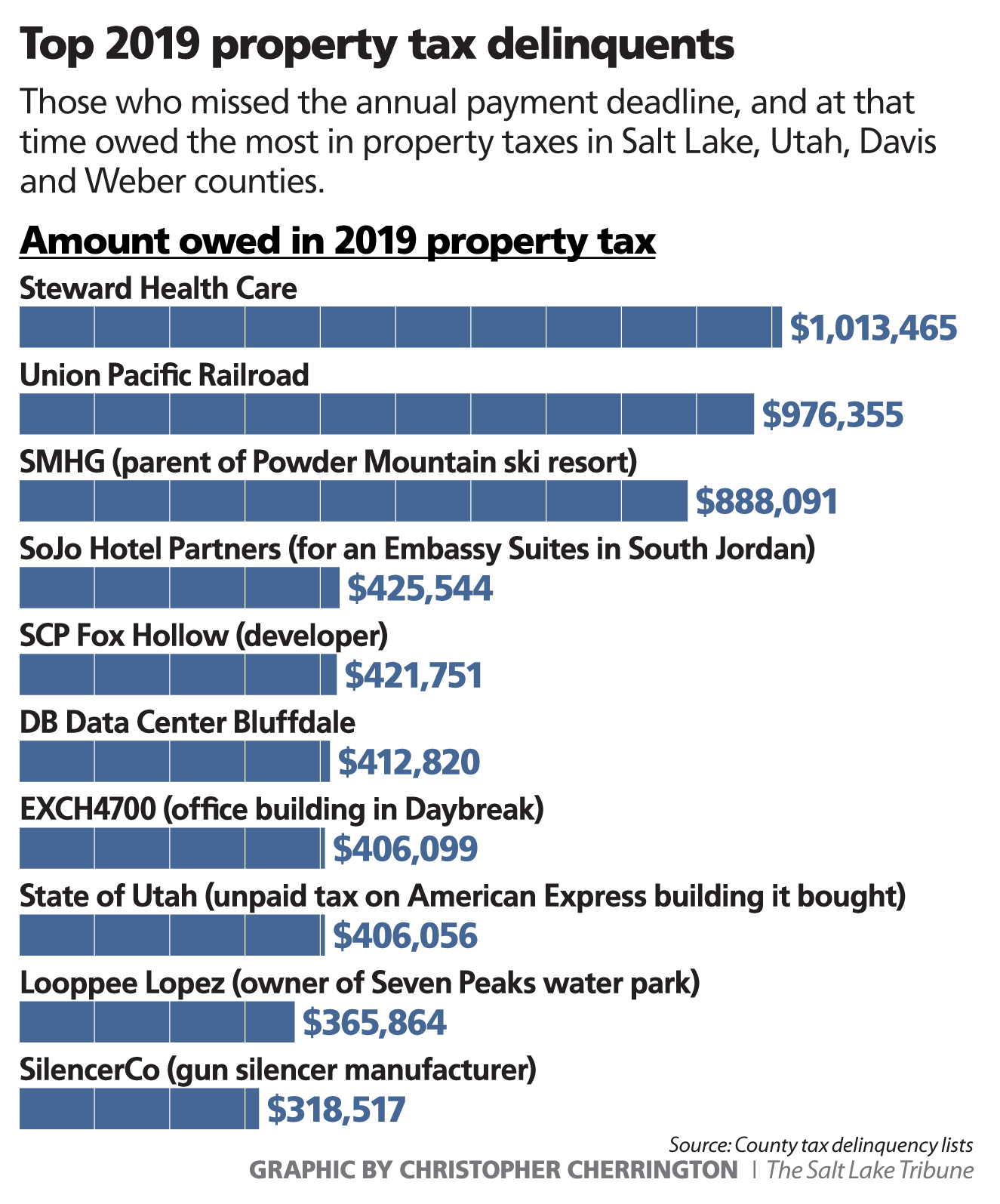
Late payments are assessed a penalty, and interest starts accruing. If the taxes are not paid within five years, the properties go to a tax sale where they may be auctioned off for the back taxes and penalties owed.
Following is a look at some of the 2019 tax delinquents.
The biggest delinquents
Steward Health Care, which is new to Utah but says it is the nation’s “largest private, tax-paying hospital operator,” ended up No. 1 on the tax delinquent list.
Three of its facilities were late on just over $1 million combined.
That included $474,578 on Davis Hospital and Medical Center in Layton; $480,607 on the Mountain Point Medical Center in Lehi; and $58,280 on the Davis Hospital Weber Campus in Roy.
Steward’s corporate offices and local facilities did not respond to inquiries about why the taxes were late.
Steward operates several other hospitals and medical centers along the Wasatch Front for which taxes were paid on time, including the Jordan Valley Medical Center in West Jordan (and its West Valley City campus, formerly called Pioneer Valley Hospital) and the Salt Lake Regional Medical Center in the capital city.
Most of those facilities also were on delinquency lists a year earlier in 2018, but at that time they were owned by Medical Properties Trust of Alabama. They combined to be No. 2 on last year’s list, but records show that taxes due then were paid late.
Ski resort or ranch?
Summit Mountain Hospitality Group, or SMHG, the parent company of Powder Mountain ski resort, is delinquent on $880,000 in tax payments, according to Weber County records. That made it No. 3 on the overall list.
But the resort says the county is charging it too much because of a dispute about whether it deserves big “greenbelt” discounts — such as a 95% reduction in taxable value — usually available only to farms and ranches to encourage them to remain in agricultural use.
“As an engaged member of the local community, we allow two local ranchers to graze the majority of our property during the summer months,” Powder Mountain CFO Shaun Mulreed wrote in an email.
“As such, some of our land holdings have been accurately classified as greenbelt for tax purposes. A number of those parcels were removed from greenbelt for the 2019 tax year due to what we believe are clerical errors, and we are working on correcting those mistakes prior to paying our 2019 property tax bill,” he said.
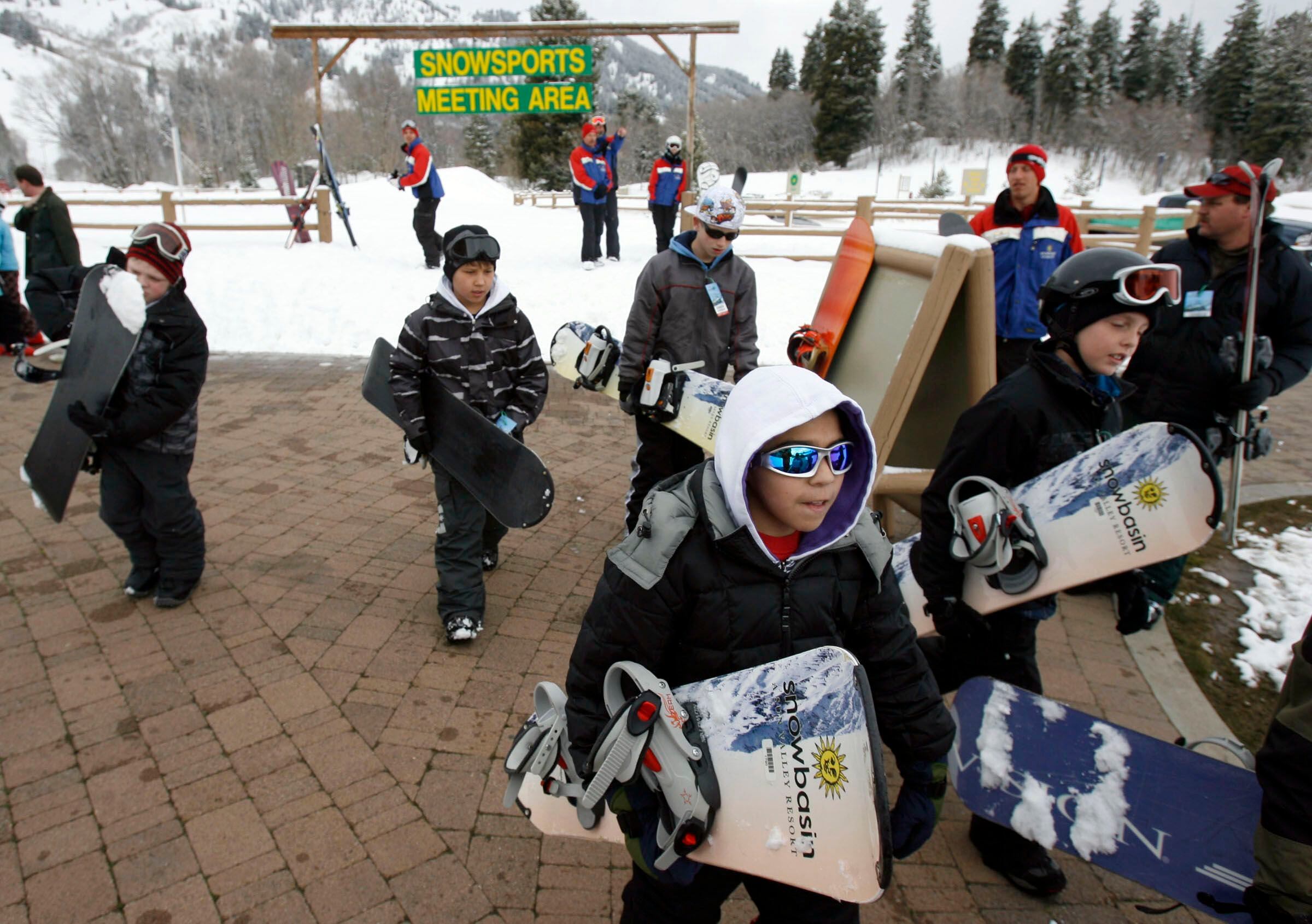
As a result, Mulreed added that Powder Mountain feels Weber County records “show tax liabilities that significantly exceed the amount owed” by the resort.
Weber County Assessor John Ulibarri confirmed that some Powder Mountain areas were awarded greenbelt discounts recently, but he said the ski resort failed to send back required paperwork that is needed to continue that status — so it was removed. He said earlier this week that the resort has not filed any formal appeals.
How deep the discounts are from greenbelt classification varies, Ulibarri said. “But typically, in Weber County it’s right around a 95% decrease in taxable value…. That’s by design, though. The entire intent of greenbelt is to keep farmers farming.”
Ulibarri said the dispute is not really over whether Powder Mountain qualifies for a greenbelt discount — the assessor’s office previously figured that it does on some parcels — but is over whether the resort has filed all the required paperwork.
Union Pacific railroaded?
The Union Pacific Railroad is No. 2 on the delinquent list — after being No. 1 last year — amid an ongoing fight over its assessments. It owes $976,335 in Utah County, according to its delinquency list.
In 2018, the railroad contended that the Utah State Tax Commission placed values on its properties statewide that are 75% too high. It filed a federal lawsuit challenging those valuations, and a judge allowed it to hold disputed taxes in escrow until the lawsuit is resolved.
“Union Pacific believes its property tax assessments for both the 2018 and 2019 tax years exceed the fair market value of our properties,” Union Pacific spokesman Tim McMahan said in an email.

“Certain counties incorrectly included taxes from prior years on the current 2019 bills,” McMahan wrote. “We are working through the legal process to resolve these matters.”
Hotel with a history
The owners of the new Embassy Suites Hotel at the South Jordan Station of the Utah Transit Authority’s FrontRunner rail line is No. 4 on the list, delinquent for $425,544 in taxes.
An interesting footnote is that hotel’s role in past UTA scandals.
The hotel was built as part of a “transit-oriented development” (TOD) between UTA and a development company called Thackeray Garn, one of the principals of which is former Utah House Majority Leader Kevin Garn.

After a 2014 legislative audit criticized sweetheart deals with developers — and helped lead to a federal investigation into that agency — UTA canceled six of seven TODs with Thackeray Garn — all except for the South Jordan hotel, which the agency said had proceeded too far to cancel.
Among concerns with that hotel, according to documents UTA released in 2017, was that two former UTA board members were invited by the company to invest in that hotel after voting to approve it.
Both former board members, Sheldon Killpack (former Utah Senate Majority Leader) and Chris Bleak (former Utah House chief of staff), said they did not end up investing in the hotel.
SoJo Hotel Partners, which has the same principals as Thackeray Garn, did not respond to inquiries about why its taxes were not paid on time.
New state building with old tax bill
Earlier this year, the state government made headlines for spending $30 million to buy buildings that for decades housed American Express in Taylorsville — with plans to spend another $26 million to turn it into a needed state office building. It was seen as a sweet deal.
But the state’s Division of Facilities and Construction Management appeared on Salt Lake County’s tax delinquency list as owing $406,000 in property taxes on the buildings, landing at No. 8 among all Wasatch Front tax delinquents.

Division Director Jim Russell said while the state has bought the buildings, the deal required the former owner to pay the tax — and said he will pursue why it has not been paid. It was owned by American Capital Heathcare Trust II.
Russell said American Express — which leased the current location for more than 35 years — will be in the buildings until the end of January before moving to a smaller site in Sandy.
The buildings with 400,000 square feet on 31 acres are intended to be the new home of the Department of Agriculture and Food and the Department of Technology Services.
Other businesses
The new owner of the Seven Peaks water park in Provo, a company listed on records as Looppee Lopez, is No. 9 on the list, owing $365,864, according to Utah County records.
Last year, the previous owner, ParkProvo, was No. 6 on the list, and had filed for bankruptcy. The park did not open in 2018, but did in 2019 with a operator and new renovations.

Other companies atop the delinquency list include at No. 10 the SilencerCo manufacturer of gun silencers. Salt Lake County says the company missed the deadline on $218,517 in property taxes on its West Valley City plant.
The company, whose founders were big Republican campaign donors — to the tune of more than $60,000 in the 2016 campaign — and hosted a visit and filmed an endorsement video featuring Donald Trump Jr., had big hopes of federal legislation to deregulate the sale of the firearms sound suppressors.
While pushed by Republican lawmakers, including Utah Sen. Mike Lee, such legislation has foundered in Congress. And SilencerCo, which had hoped to expand its customer base by cutting their wait times and fees, in early 2017 laid off an estimated 40% of its workforce.
The DataBank data center in Bluffdale — a high-tech back-up service company — was late on $412,820 in taxes.
SCP Fox Hollow was No. 5 on the list, late for $421,751 in tax on undeveloped tracts in Saratoga Springs. Developers often are high on the list because some traditionally use unpaid tax as sort of an easy-to-obtain loan — avoiding the need for other loans to cover taxes on property that is not yet generating revenue.
Weber County Treasurer John Bond said treasurers have noticed less of that lately among developers while Utah’s economy has been booming, and homebuilding and home prices have prospered.
Some other businesses with familiar names on the delinquent list this year included Dannon for its West Jordan yogurt factory, $272,204; Fort Union Shopping Center, $179,422; the Ascent Academy charter school in West Valley City, $134,053; Soccer City, $111,063; and the Syracuse Family Fun Center, $97,569.
Late lawmakers
Every year, a few politicians land on the delinquency list.
This year two state legislators were late on property taxes on their homes. Rep. Stewart Barlow, R-Fruit Heights, was late on $13,604. “We just missed the deadline, but have paid it now,” he said. “And we paid a penalty for that.”
Rep. Susan Duckworth, D-Magna, was late on $1,928 on her home. She did not return phone calls seeking an explanation why she was late.
Two other politicians were not late on their personal taxes but were late on some taxes owed by their businesses.
Utah House Speaker Brad Wilson is co-owner of Destination Homes, and it was late on $3,328 in taxes on three parcels in Salt Lake and Davis Counties.
“We pay tax on hundreds of properties every year. I saw a stack of forms for them on our accountant’s desk,” Wilson said. “A couple must have slipped through the cracks,” and he promised to handle them.
Companies where former House Speaker Hughes is a partner similarly owed $11,677 on an apartment building and another nearby property in downtown Salt Lake City. Hughes said a business partner handles the books on those properties. That partner, Gary Nordhoff, said the deadline was missed but the amounts will be paid soon.
Leonard Pitts: This is the Year of Reading Women
I’m here to say goodbye to Stephen King.
Not that he's going anywhere. Indeed, I imagine he's at his desk even now, devising a fiendish fate for some schmuck unlucky enough to be a character in a Stephen King novel.
But whatever that fate may be, I will know nothing about it — not this year, at least. I will be similarly ignorant of whatever legal potboiler John Grisham has in the pipeline or whatever magisterial new history David McCullough publishes next. The acclaimed new novels by Ta-Nehisi Coates and Colson Whitehead? They will also have to wait until 2021.
This, you see, is The Year of Reading Women.
No, that's not an official calendar designation. Rather, it's an unofficial columnist designation, springing from a piece I did last summer. I spoke of perusing my book diary and discovering to my chagrin that it contained almost no women authors. In 2016, for instance, I read or listened to 46 books. Exactly one — Tananarive Due's "Ghost Summer Stories" — was by a woman.
Without realizing it, I had been filtering female authors out of my reading list. It was a jolting discovery for an avowed feminist, but it reminded me how insidious biases can be. And that, for as much as people love to proclaim their absolute lack of prejudice, what they usually mean is that they do not go around thinking mean thoughts about racial, religious or gender Others. Which is well and fine, except that our most powerful and consequential prejudices tend to be the ones we carry without even knowing we do. They lead us to assumptions we make without realizing we've made them, actions we take without quite knowing why.
So it's not enough to harbor no conscious bias. Rather, it's incumbent upon good people also to be vigilant and intentional in dealing with biases they carry below the level of conscious awareness.
The Year of Reading Women is me, being intentional. From now till Dec. 31, with the exception of those I might need in researching a column or novel, every book I read or listen to will be by a female author.
You, dear reader of whichever gender, are welcome to read and listen along. I'll be posting capsule reviews through the year and hope you'll share your thoughts as well. The web page that will host all this is still under construction, but you'll find the link in a future column as well as on my page at MiamiHerald.com. I'll also post links on Facebook and Twitter (TheYearOfReadingWomen).
When I wrote that first column I didn't expect much response, books being the unsexy subject they are. So imagine my surprise when it turned out to be my biggest column of the year. I'm still snowed under by reader recommendations and have resigned myself that I'll never reach the bottom of the pile. But I thank all of you who suggested a name or title to me. Most of this year's reading will be drawn from your lists. We begin with Toni Morrison's "The Bluest Eye" and Linda Castillo's "Sworn to Silence."
I confess to some mild trepidation. Metaphorically speaking, at least, Stephen King is a friend of long standing. It's going to feel strange going a year without him, Walter Mosley or Greg Iles.
However, I need to heed my own advice. How many times have I argued that rooting out ingrained biases requires a willingness to venture beyond your comfort zones? In getting out of your comfort zones, you expand them, a process that is ultimately less about abandoning old friends than discovering new ones. So yes, today's the day I say goodbye to Stephen King.
It's also the day I say hello to Jodi Picoult.
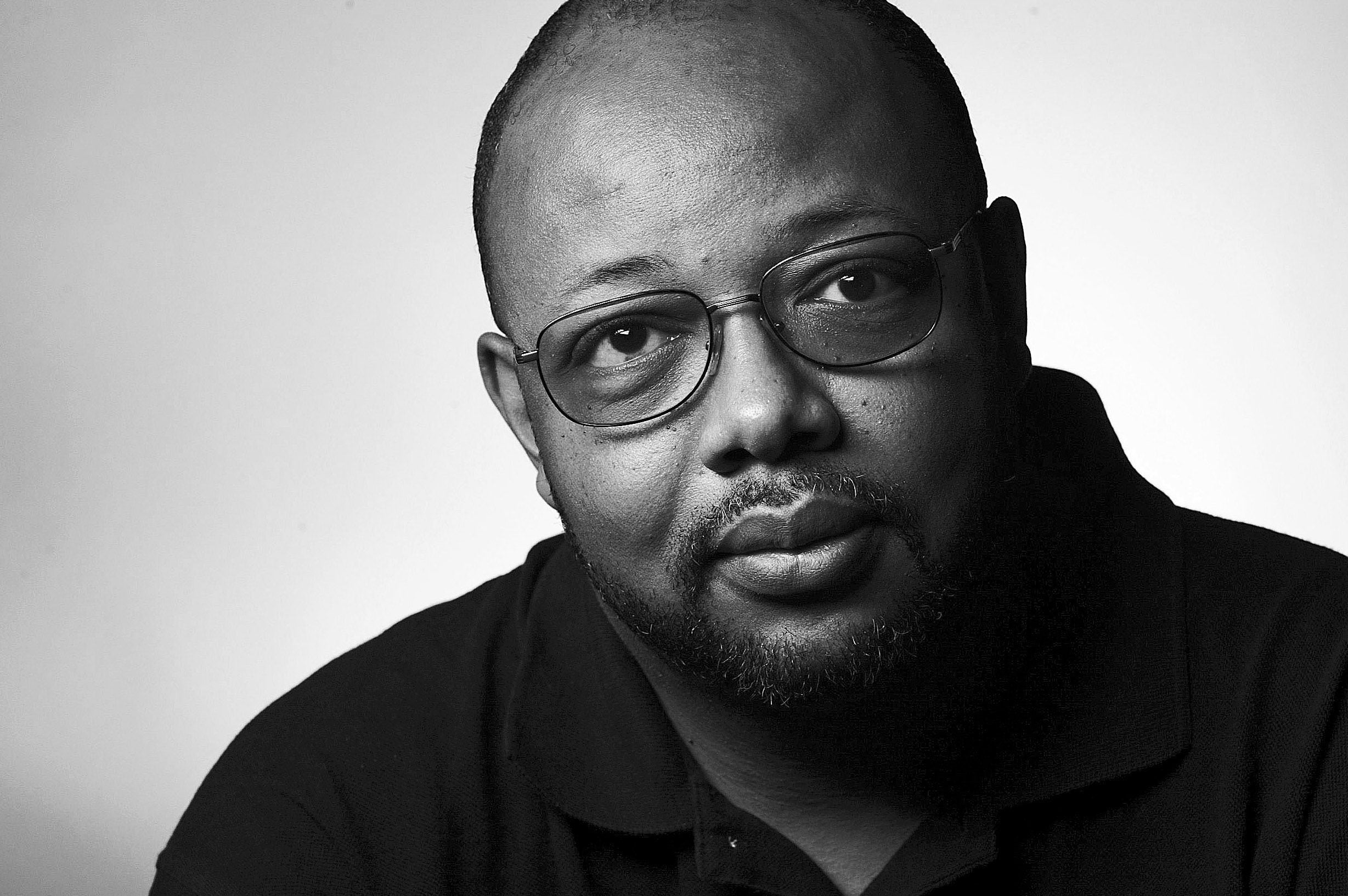
Leonard Pitts is a columnist for The Miami Herald. lpitts@miamiherald.com
Letter: Trump is responsible for many deaths
When you vote against someone rather than for someone, the alternative may be worse than you intended.
If you voted against Bob Bennett, you ended up with Mike Lee. If you voted against Hillary Clinton, you got the dictator wannabe, Donald Trump.
This inept “chosen one,” according to the Associated Press, had the unmitigated gall to warn about impending carnage in Syria after throwing the Kurds to the wolves and releasing terrorist prisoners when he withdrew U.S. troops from Syria. Meanwhile his comrade, Vladimir Putin, Syria and the Taliban kill countless civilians with indiscriminate bombing campaigns.
This sociopath bears the responsibility for every civilian death as a result of his indiscretion, as do the members of Congress failing to keep him in check.
Gene Miner, West Jordan
Scott D. Pierce: PBS documentary shows parallels between McCarthy and Trump — including one the press won’t like
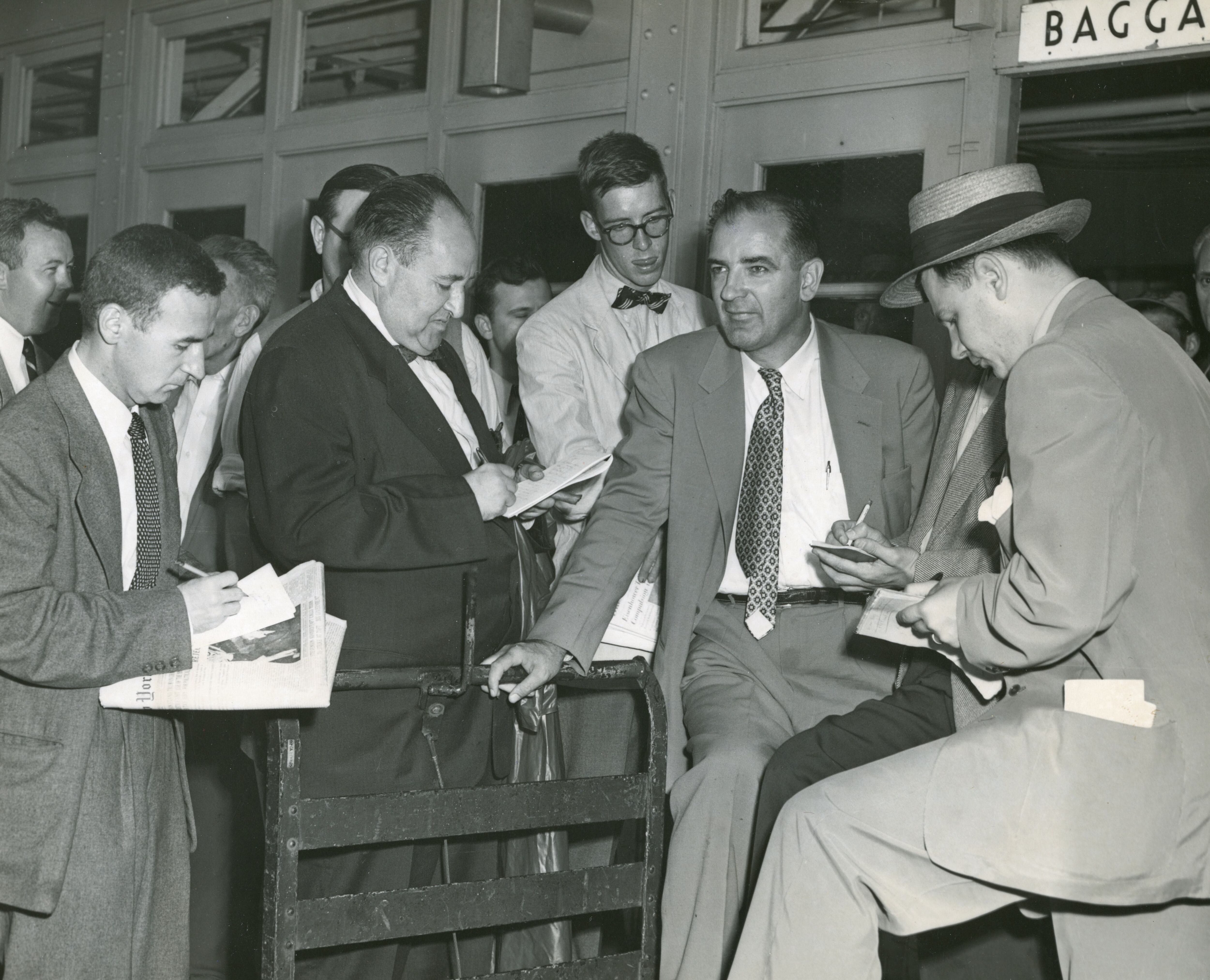
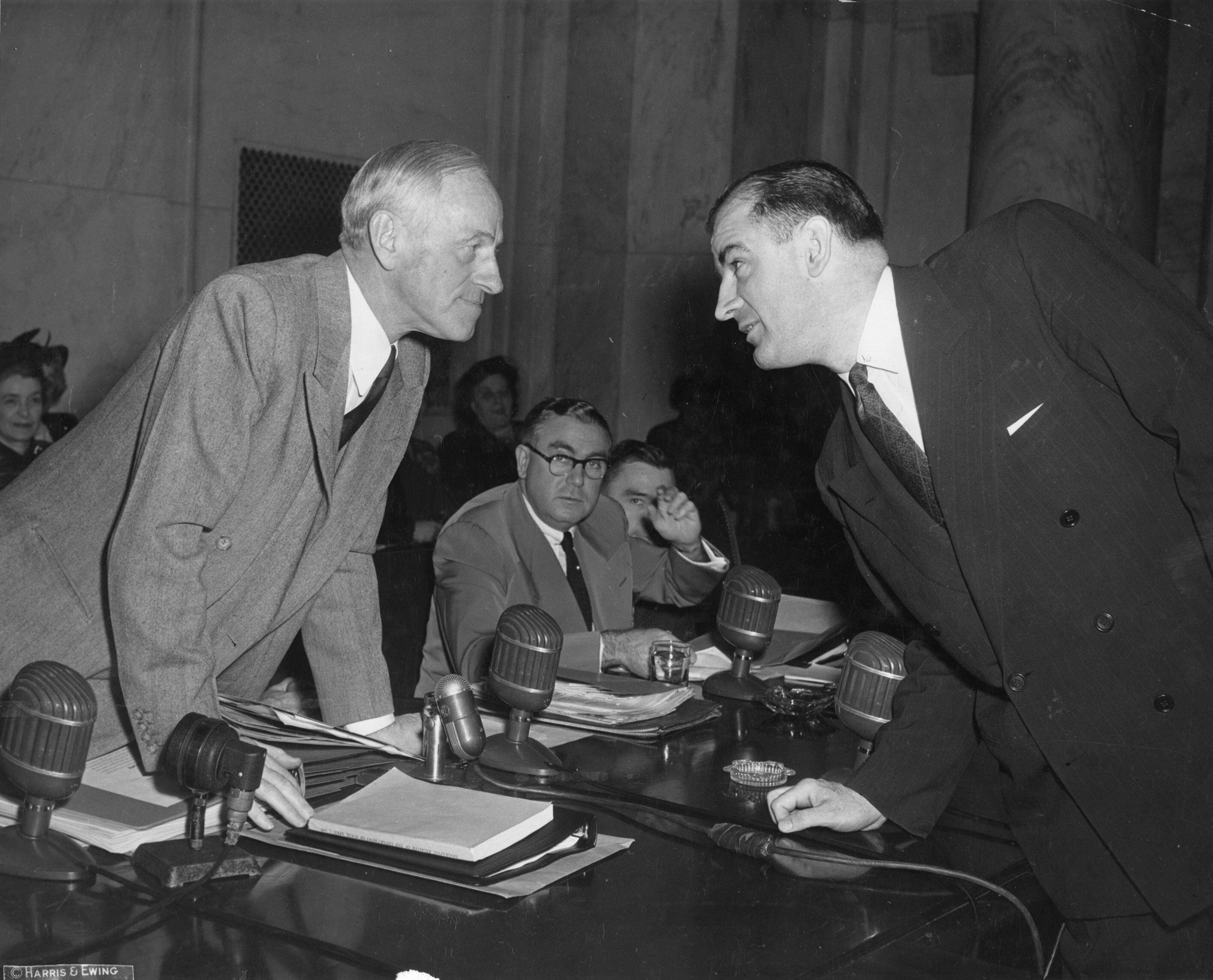

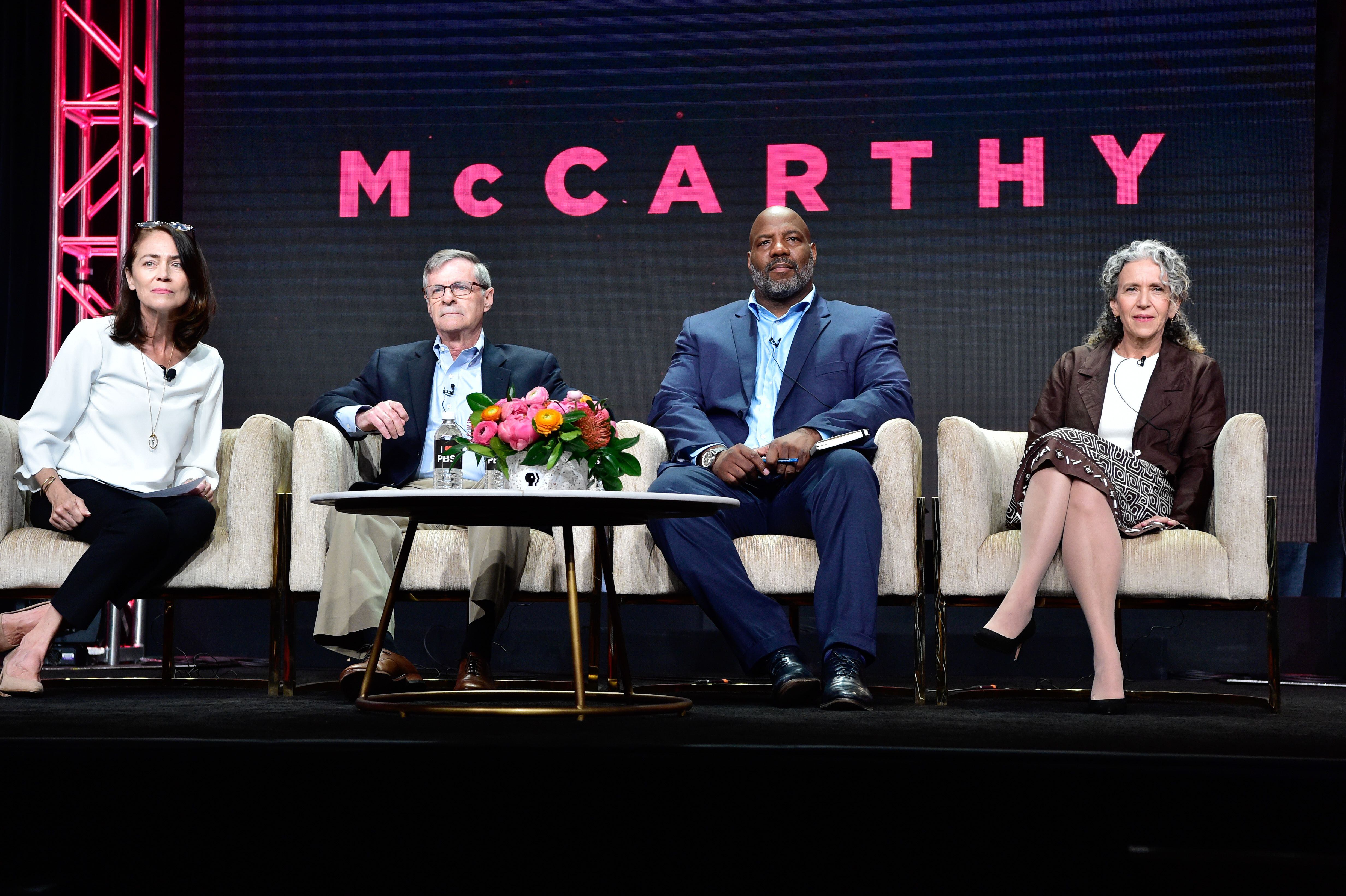
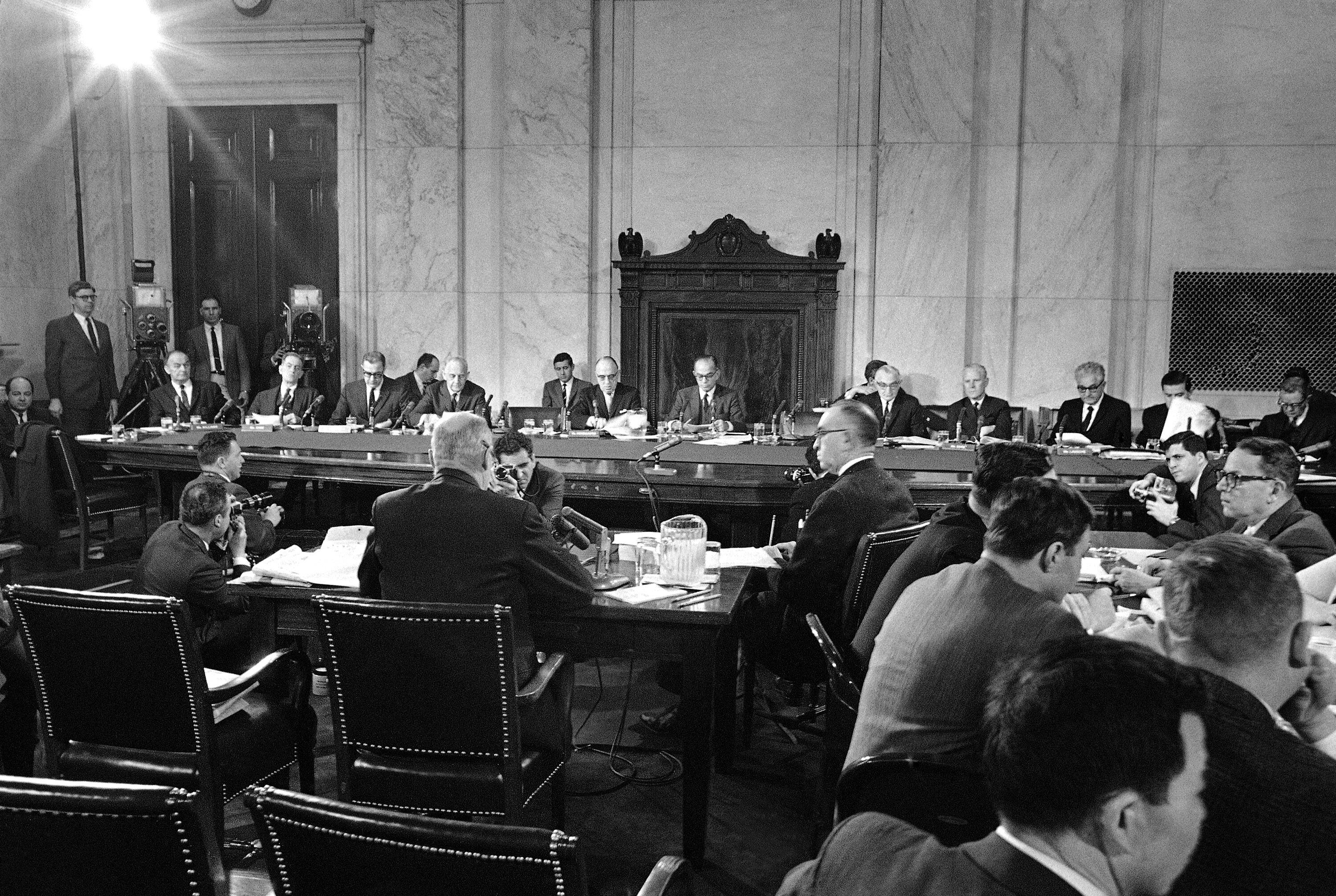

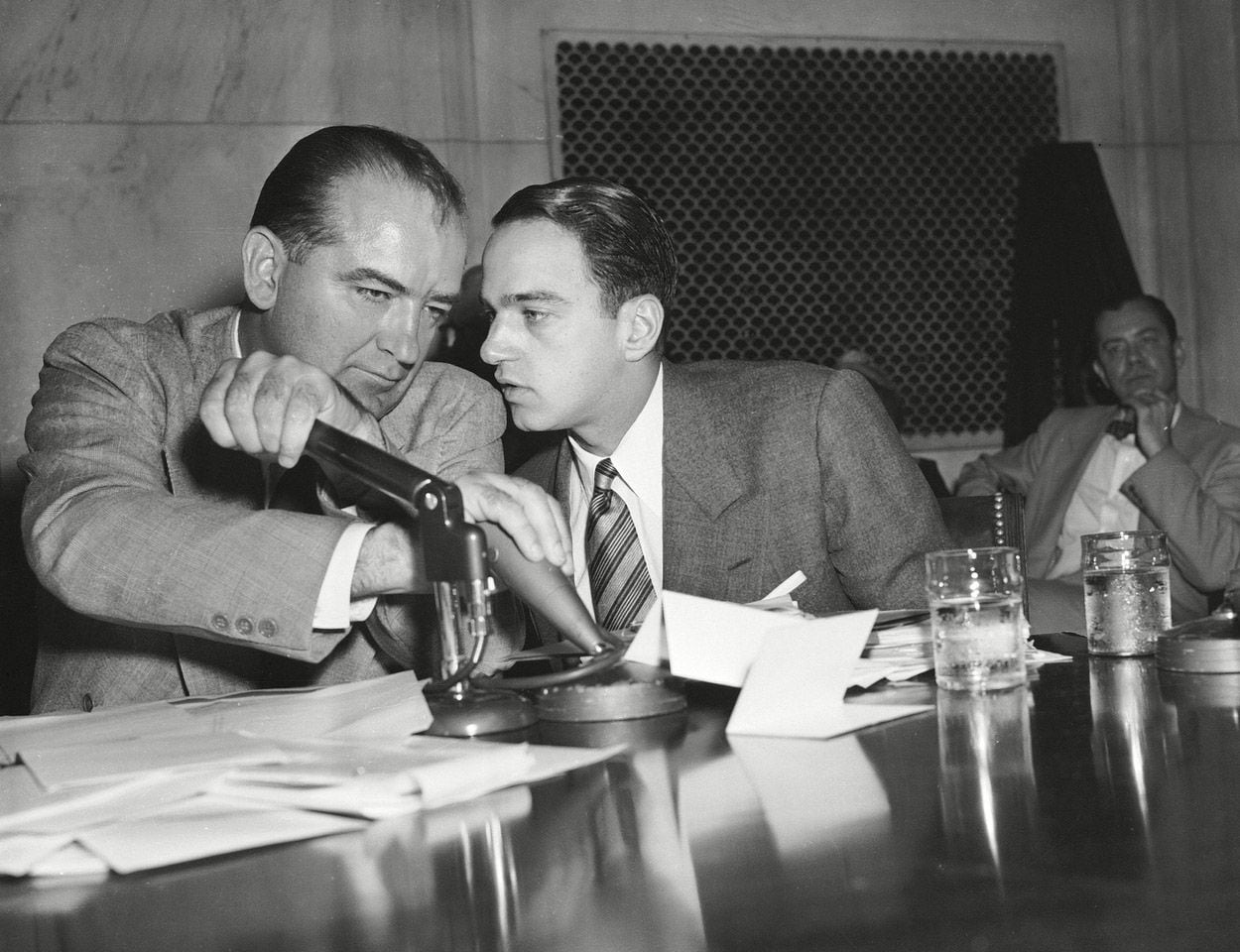
PBS’ “American Experience” documentary about Joe McCarthy is deeply disturbing — not just because of the senator’s outrageous lying, red-baiting and gay-baiting, but because of the parallels between what happened in the early 1950s and what’s happening today.
And the similarities go far beyond the fact that both McCarthy and Donald Trump employed the nefarious Roy Cohn as their legal adviser.
There are also disconcerting parallels between how the media of the 1950s treated McCarthy and how the media treated the president when he was running for office.
To be clear, the “American Experience” documentary (Monday, 8 p.m., Ch. 7) is not about Trump. Work on “McCarthy” began “way before” the 2016 election, according to senior producer Susan Bellows, and viewers are left to draw their own conclusions about the similarities.
No doubt those who are inclined to oppose the president will see the parallels; those who support Trump won’t. But that segment of the population might also miss that the press had a part to play in McCarthy’s rapid rise before his sudden, precipitous fall.
“To me, there’s a resonance in the treatment of the press,” said Sharon Grimberg, the writer, director and producer of the documentary. “McCarthy was somebody who lied constantly, vociferously, and did it so often it was hard to fact check him.”
It’s become almost legendary that CBS’ Edward R. Murrow took on McCarthy and precipitated the end of his reign of terror. Grimberg doesn’t discount Murrow’s importance, but said she found “many journalists who did stand up to McCarthy early in his career.” And they “got very rough treatment for doing it” — even being called before his Senate panel.
“He punished journalists who called him out on his lies and his erroneous facts,” she said. “I think that we’re in a similar sort of situation today.”
Although you could argue that Trump has amped up the pressure, calling the free press the “enemy of the people.”
The documentary recounts how the media played a role in bringing McCarthy down. It clearly lays out how televising the Army-McCarthy hearings revealed the senator to be a bully and a blowhard. There’s less emphasis on how the media of the day — mainly newspapers, which dominated the early 1950s — made McCarthy in the first place.
“The media kind of had a conflict of interest as it pertained to him,” said Jelani Cobb, a professor of journalism at Columbia University and staff writer at The New Yorker who consulted on the documentary. McCarthy regularly said “outlandish” and “outrageous things … speaking in tabloid headlines almost. … He’s good copy. He sells. If you put his name or a quote from him above the fold on a newspaper, that newspaper is going to get people’s attention.”
In other words, the media of the early 1950s gave McCarthy a lot of ink to sell newspapers and a lot of airtime to boost TV news, which was still in its infancy. This, despite the fact that editors knew he was lying.
“Obviously, the more important the person and the more spectacular the charge, the more likely that is to be on Page 1,” said NYU history professor David M. Oshinsky, the author of “A Conspiracy So Immense: The World of Joe McCarthy.”
Compare that to TV and online media devoting a disproportionate amount of coverage to Trump because, for good or ill, he brought viewers and clicks.
And when McCarthy was called out on his lies, “He would lie exponentially … churning out more and more misinformation,” Cobb said.
You have to willfully deceive yourself not to see that parallel between McCarthy and Trump.
Letter: Senators should conduct a fair proceeding
Let’s assume, for the sake of discussion, that the president was treated unfairly by the proceedings that led to his impeachment in the House of Representatives.
Let’s further assume, for the sake of discussion, that most of the senators who will decide the question of whether to now remove the president from office are professing Christians, including some members of The Church of Jesus Christ of Latter-day Saints, who believe and accept the teachings of the New Testament, including the Sermon on the Mount.
Is the appropriate Republican response to the impeachment proceeding in the Senate to make sure the proceedings are now equally unfair the other way? Let alone seek revenge? Or might it be to metaphorically “turn the other cheek” and “do good to those who despitefully use you” and provide a scrupulously fair and open proceeding, considering all relevant evidence?
I hope that our senators will decide to be Christian statesmen and women of honor and vote to conduct a fair proceeding, consistent with the oath they will take.
Scott C. Pugsley, Salt Lake City